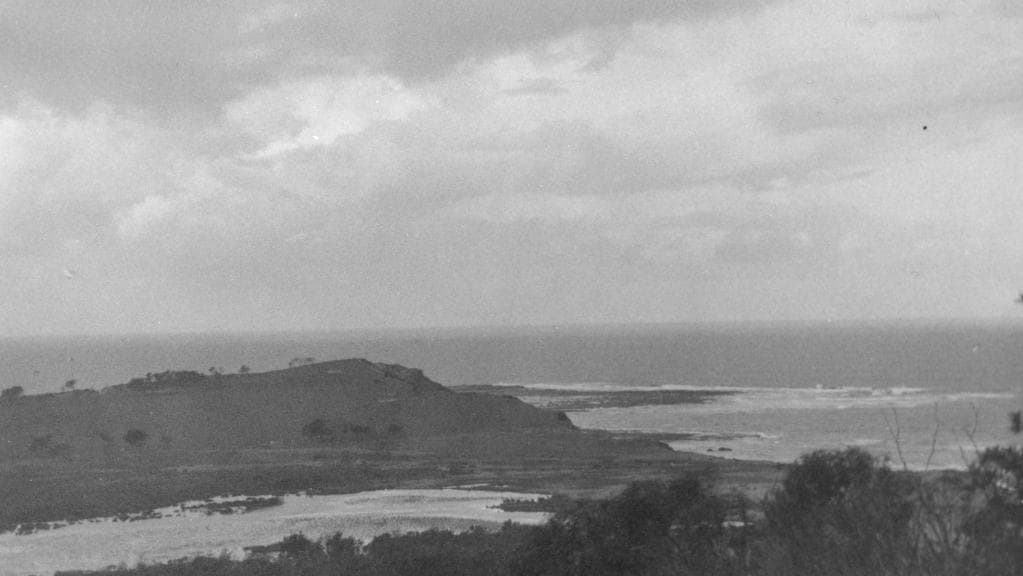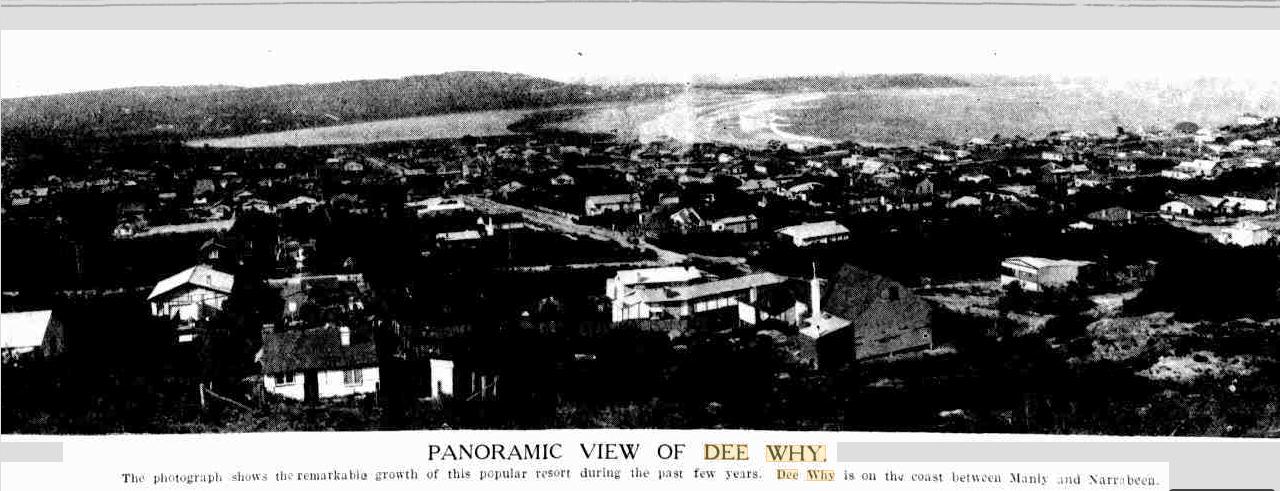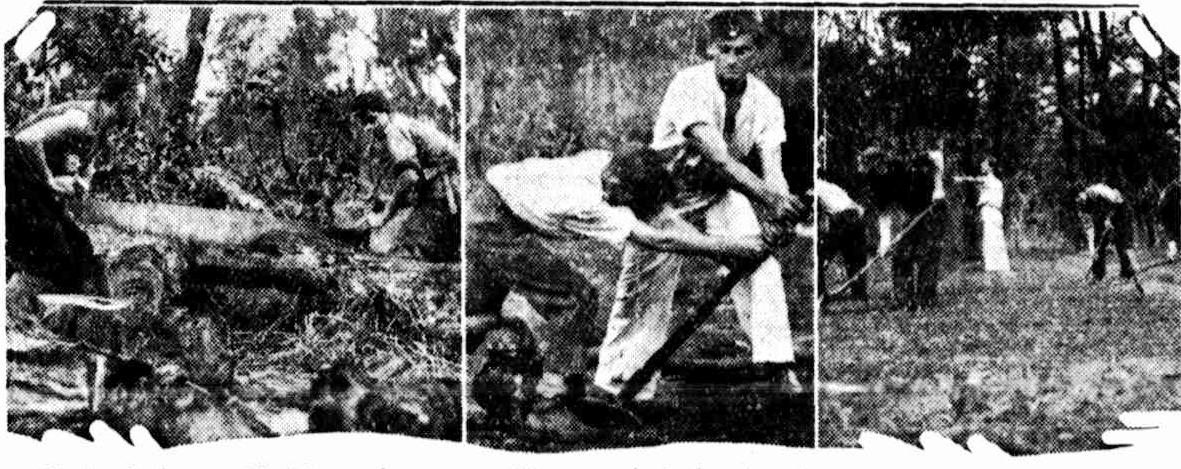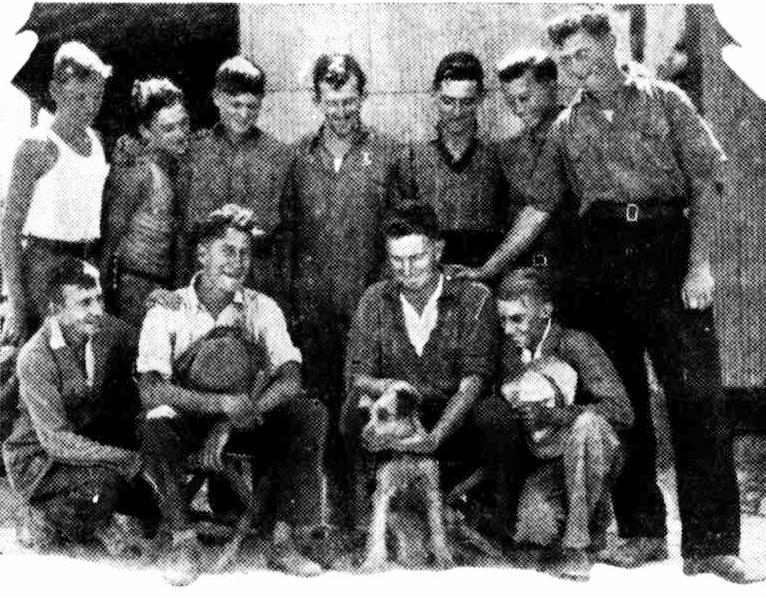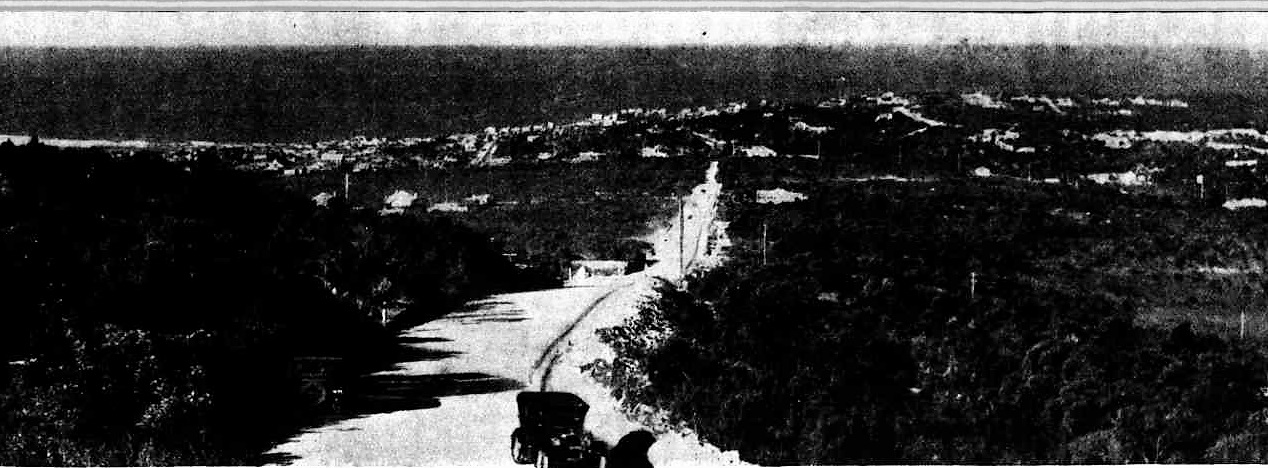Historic boat winches restored to former glory at Long Reef + Dad's Fishing Shack at Long Reef by ken 'sava' lloyd & Extras
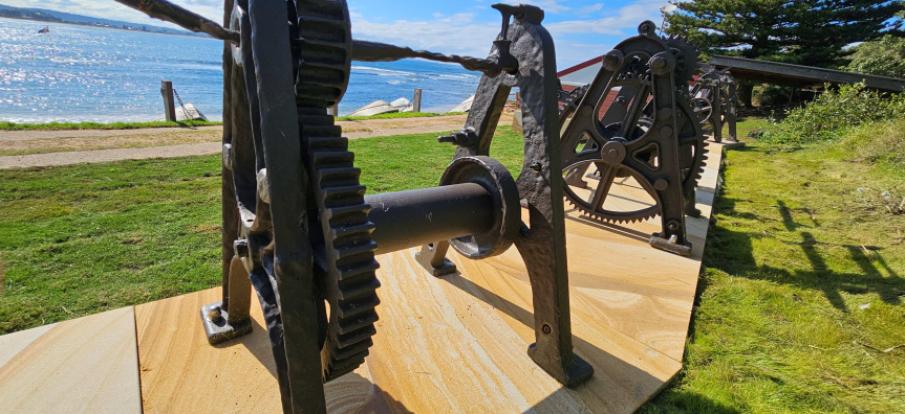
In a remarkable effort to preserve maritime heritage, a set of historic boat winches located at Fishermans Beach at Long Reef have been successfully restored and are now public cultural artefacts on display to the community on the coastal walkway.
Originally, these winches were placed on the shoreline to pull in heavy, timber-hulled fishing boats. Over time they were no longer used and started rusting away, falling into a state of disrepair with some falling onto the beach being buried by the sand.
.jpg?timestamp=1724184502517)
The restoration project was initiated by local resident Michell Cudmore and her late father Tony Davis, Long Reef Fisherman’s Club Secretary since 1993 and later President for over 10 years.
Ms Cudmore applied for and was successfully awarded a grant from the NSW Government’s Department of Primary Industries. She also approached and was granted Council assistance to bring these significant pieces of nautical history back to life.
The restoration involved meticulous cleaning, sand blasting, repainting and careful preservation of original materials, taking 16 months to complete.
Eight of the original 12 winches are now displayed on top of sandstone plinths installed next to the heritage-listed Fisherman’s Hut, just back from the beach. The winches will now provide visitors with a unique glimpse into maritime history. An official unveiling ceremony was scheduled for 19 August 2024.
Council assisted with the removal of the winches and their installation once restored, retaining works to prevent further erosion of the shoreline in that area, and formalising boat storage as part of this project. The dinghy storage was constructed from recycled timber from an old wharf off Scotland Island.
.jpg?timestamp=1724184619412)
Photos: courtesy Northern Beaches Council
Dad's Fishing Shack at Long Reef
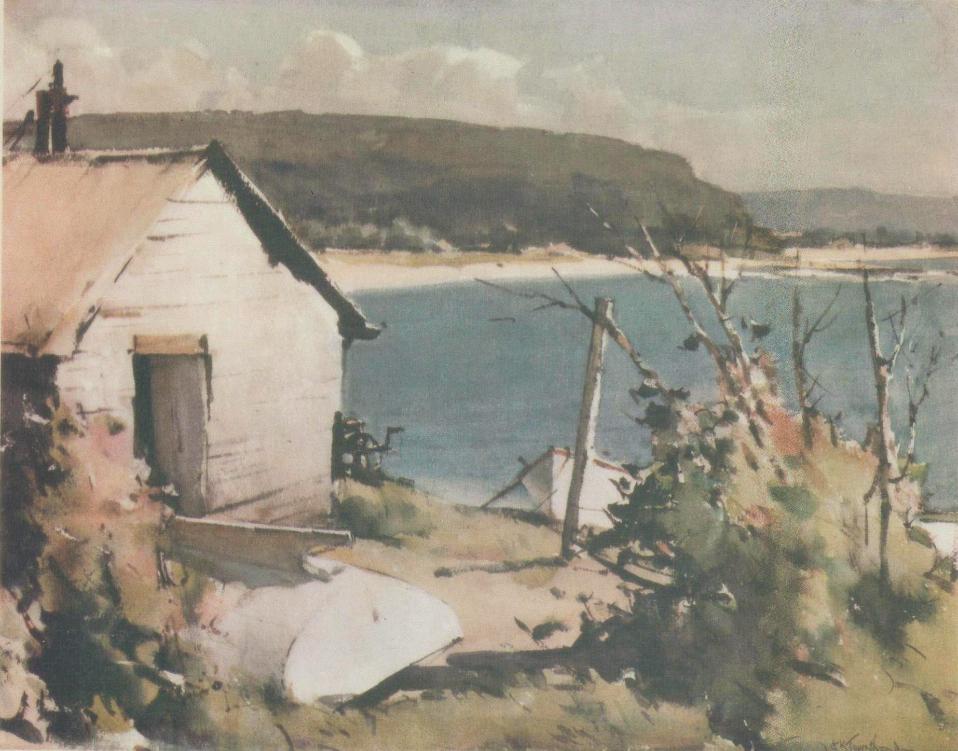
Mr. Lloyd's Fishing Shack at Long Reef. Painting by G K Townshend - courtesy 'SavaLloyd'.
Dad's Fishing Shack At Long Reef
Dad, Wilfred Henry Lloyd, was a Licenced Fisherman with his boat on the beach at Long Reef. He had an old mate named Charlie Proudfoot, father of Wally, who used to go outside fishing with him. I can remember him bringing Kingfish home, that were taller than me and big Jewies too. His favorites were Teragalin.
Mum used to work at Ernie Hookham's Haberdashery at Narrabeen Terminus. So Dad used to take me with him to The Reef, I would have been about 9 years old. I used to get Seasick so I stayed on the beach on my own until they came in from fishing. Dad's favourite spot was The White Rock Bombie.
On the Beach there were winches (Parts of Horseworks) and the uprights were chassis off cars. The wire would go over the uprights and hook onto the fishing boat at the Bow, and I would lay the wooden slats i.e like rail lines and put a 2" pipe under the stern (keel) and the boat would slide down to the water.
My job was to keep the slats and the pipe in front of the boat as it slid down the beach. The same process when the boat came in.
I played around the rocks and slept in Dad's shack till they came in.
Dad and Charlie would clean the fish and take them into DY pub, in Dad's Bull nose Morris. I used to sit in the back with the fish.
Dad and Charlie would get on the grog and I think they drank all the money they made from the sale of the fish. I can remember being in that car for a long while.
I can also remember a big Sailing boat getting wrecked on the reef and dad got a lot of wood off it. He put the decking on the floor of the Old Shack; 8 by 6" oregon. We had big bags of flour and sugar for a long while after the wreck. I think the boat that was wrecked was a Coastal Trader. From memory there were about 5 huts along the corner.
I used to sleep in there on army coats. Some of these dad may have acquired after serving in WWII
Ken ‘Sava’ Lloyd
One of the first of these was recorded in a 1912 article which runs below by someone who also published articles on other walks at Narrabeen. Our latest one ran just a few months ago in Coastal Connection Key To Conservation: Connecting the Chinese community with the coast was the theme behind an interactive rock pool walk at Long Reef Aquatic Reserve.
The connection between the Fishermen's Huts at Long Reef, and Fisherman's Beach itself, stretches back prior to European recorded history. The Reef Care website records '“The Big Hut” as it was known (on the right) still exists today. It is know known as the Fishermen’s Hut and the Fishing club is one of the oldest in Sydney. It was built in the early 1870s.'
The same website records that it is the planting of Cactus plants Agave americana planted by a lady who lived in the centre hut in the 1920's that inspired eight locals in 1997 to form Reefcare; 'They joined Warringah Council’s Friends of the Bush to remove these noxious Cactus, carpet rose, Japanese honey suckle plants, geraniums, garden pea and other remnant non-native plants.'
Charles Proudfoot, father of Walter (Wally) and George, was an early champion swimmer and manager, later on, of the Drummoyne 'baths'. The Proudfoot family of father Charles, a champion sprint swimmer, and sons Wallace (Wally) and George were what building Australia was all about:
The race for the 100 yards swimming championship of Australia took place in Sydney last night, and was won comfortably by J. Hellings from C. Proudfoot with A. Holmes third, the time being lmin. 5 12/ secs. B. Gormley won his heat but did not start in the final. No title. (1896, January 23). The Maitland Daily Mercury (NSW : 1894 - 1939), p. 4. Retrieved from http://nla.gov.au/nla.news-article123929794
SWIMMING. (By ''NATATOR.”) FLYING SQUADRON TEAM CHAMPIONSHIP OF NEW SOUTH WALES 500 yards
Canning ploughed away In great style, but Proudfoot held his own, while Lane gained perceptibly, but slowly, for he was contending against two very speedy men, one of whom, Proudfoot, was showing his true form that day. On the three champions dashed, neither letting up an instant, and the crowd applauded itself hoarse. As Lane was seen to be moving oubanning the excitement became very great. Would he catch Proudfoot?' some asked; but it was Proudfoot's day out and he gave a fine display, holding the six yards' advantage ho had started with right through'. Ten o fifteen yards fioni home Lane caught Caunning, and they swam together for a few yards', the Newcastle, man surprising everybody with his turn of speed, but 'little Feed.' as his enthusiastic mentor speaks of him, was not to be denied, and by dint of a big effort he landed second prize for his club (East Sydney) two foot— no more— ahead of Canning, who had performed very well indeed under the circumstances. A. perfect storm of applause greeted the three swimmers as they clambered over the basin’s sides, and Proudfoot (Balmain) was carried shoulder-high by his club mates. SWIMMING. (1898, December 21). Referee(Sydney, NSW : 1886 - 1939), p. 9. Retrieved from http://nla.gov.au/nla.news-article121517800
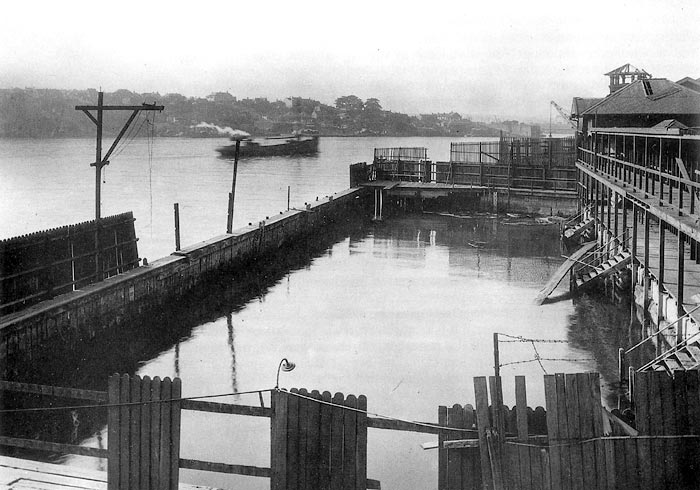 Younger readers may wonder what a 'natator' is: it means in the sense used here a 'swimmer' and is from the Late Latin natatorium, place for swimming, from neuter of Latinnatatorius, of swimming, fromnatatus, act of swimming, from past participle of nat re, frequentative of n re, to swim.
Younger readers may wonder what a 'natator' is: it means in the sense used here a 'swimmer' and is from the Late Latin natatorium, place for swimming, from neuter of Latinnatatorius, of swimming, fromnatatus, act of swimming, from past participle of nat re, frequentative of n re, to swim.
RESCUED FROM THE HARBOR. BOY FOUND FLOATING FACE DOWNWARDS.
An exciting harbor rescue took place at Pyrmont on Monday Afternoon, a 6-year-old lad, named Leslie Wood, who resides with his parents in Point-street, Pyrmont, being pulled out of the water in sensational circumstances. The boy, it is stated, wasplaying with a number of other children on the Pyrmont Wharf, when he fell in, and the tide carried him down the harbor. When the little fellow reached the Pyrmont Baths at Point-street, he wan seen by several persons floating face downwards. Fortunately Mr. Charles Proudfoot, the well-known League swimmer and proprietor or the Pyrmont Baths, was in the vicinity and dived in, fully dressed, and brought the lad ashore. Resuscitation methods and restoratives were used. and the youngster returning to consciousness, was taken home. Inquiry this morning found that he had much Improved during the night, and was apparently none the worse for his immersion. This makes the ninth lad Mr. Proudfoot has saved from drowning at Pyrmont.RESCUED FROM THE HARBOR. (1911, December 5).Evening News (Sydney, NSW : 1869 - 1931), p. 6. Retrieved fromhttp://nla.gov.au/nla.news-article115281520
This is eldest son George (below), born 1900. Wallace (Wally) was born in 1902.
At a carnival held under the auspices of the Western District branch of the Public Schools A. A. Association, the 13-year-old son of that one-time much heard of natator, Charles Proudfoot (who is now ensconced at the Pyrmont Baths), was successful in three premiership events. They were entitled 'District Championships.' It now appears, by reason of the fact of his having competed again at the Pyrmont Public School's gala on Tuesday night, and repeated his successes in a couple more championship races, he thereby sacrifices his claims to the first prizes In the former contests, under some extraordinary regulation which ordains that only lads who attend schools whichdo not organise carnivals of their own, or, if they do, do not figure in them, are eligible to take part in the competitions decided by the various branches of the P.S.A.A. Association.It is palpable either one of two things is wrong. They have no right to be termed 'District Championships,' or else the rules are sadly in need of amending. Young G. Proudfoot (as a matter of fact there are two scions of that ilk who are very much at home in the water) swam the 55yds lap under 36sce. which Is an accomplishment a 13year-old boy might well feel proud of. Personally, I have not seen him In action, but 'Bull' Helllngs speaks highly of his stroke, and Bull ought to know a good one when he sees it. EASTERN SUBURBS. (1914, March 14). Saturday Referee and the Arrow (NSW : 1912 - 1916), p. 7. Retrieved fromhttp://nla.gov.au/nla.news-article117418650
Besides being excellent swimmers themselves, these two sons roped dad in to what he seemed to have a passion for anyway. The Classic Wooden Surf Boats website states: ...at this stage there were no specifications, boats varying in length from the early 18's, a touch longer for the Johnny Walker boats (donated by J.W. distillers) to 22's for the home-made boats at Nth Narrabeen.These three boats, all named Barracouta, were built by Charlie Proudfoot, amateur shipwright and fulltime sweep. A few feet longer, the third Barracouta was the first boat with four thwarts, spreading the rowers evenly through the boat. The beam had come down to a fairly standard 53.:
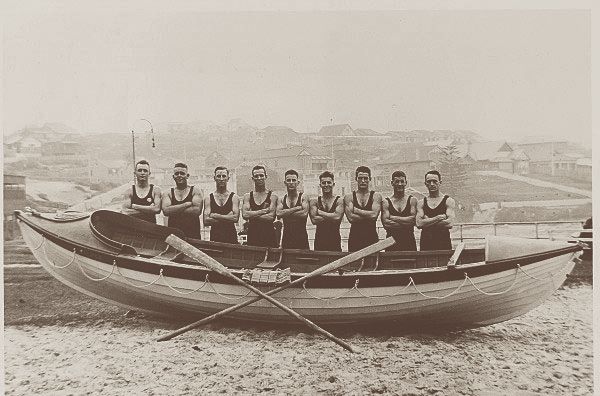 GOSSIP FROM THE SURF - NORTH NARRABEEN'S NEW BOAT : MANLY MEMBERS AND 400 YARDS' TEST
GOSSIP FROM THE SURF - NORTH NARRABEEN'S NEW BOAT : MANLY MEMBERS AND 400 YARDS' TEST
(By BELTMAN.) Members of North Narrabeen Club do not shirk hard work. Their new boat, after being launched on Saturday at Pyrmont, will be rowed to North Narrabeen, a mere matter of 18 miles. No records will be attacked, but the crew hope to arrive at headquarters in time for supper. Stan Exton and J. (Scotty) Black, of North Narrabeen, report a busy weekend. On Sunday Armistice Day was observed, not only by the club members, but by over 400 local residents. They foregathered in front of the club house, which was bedecked with flags. The club flag flew at half-mast. It was one of the most impressive services held on any of the beaches. North Narrabeen is still enrolling members, and instructor Gee McRae and Captain Scot Black are busy knocking four surf bronze squads into shape. At last Sunday's meeting, Treasurer Cec McRae resigned his position. Stewart White was elected.
A HARD PULL.
At last definite news of the arrival of N. Narrabeen's hush boat, the Barracoutta II., is available. The new surfboat (built by the old-time swimmer Charles Proudfoot, father of the two well-known surfers, George and Wally) will be launched at Pyrmont next Saturday, and, manned by the builder. Geo.Proudfoot, Stan Exton, Cec McRae, with Dick Dalton in command, will be rowed to North Narrabeen. The lads do not intend attempting records, but will indulge in some fishing enroute, probably arriving in time for supper. From Pyrmont to N.N. is somewhere about 18 miles — a fair row. A new clubhouse is N.N.'s next move. GOSSIP FROM THE SURF. (1923, November 16). Arrow(Sydney, NSW : 1916 - 1933), p. 11. Retrieved from http://nla.gov.au/nla.news-article103540135
The joy finally having this new surf boat brought did not last long:
A HARD LUCK STORY. N.N. were prevented from competing in last Saturday's surf boat race, at Manly regatta, owing to a series of accidents. Leaving N.N. early in the morning, Charley Proudfoot, sen., Cec. McRae, and Jim Bill, hoped to reach Manly in time to hand the Barracoutta over to the racing crew, but they smashed a sweep near home. They returned and got another, but this went bung off Collaroy. Securing a third sweep from a fisherman, they completed the long pull, and entered the Harbor in fine spirits. Before they had time to ship the racing crew, however, the race was started, and N.N. were not in it. Hard luck, after an 18-mile row. TO DEAL WITH SURF FOOLS (swim between the flags). (1923, December 14). Arrow (Sydney, NSW : 1916 - 1933), p. 7. Retrieved from http://nla.gov.au/nla.news-article103542127
This surf boat, like all equipment bought by our clubs, came from a series of concentrated efforts and carnival-like events to raise the funds needed where all contacts were pulled in to the campaign:
NORTH NARRABEEN BUSY. That splendid club. North Narrabeen, is working hard for its Easter carnival. If Barracouta II. does not materialise many hard grafters will be keenly disappointed. The gala is listed for Easter Monday with an excellent concert on the previous Saturday night. The programme approved by the S.L.S.A. is bristling with good contests and liberal prize- !money. Stan Exton tells me that a feature of the afternoon will be the Narrabeen Derby. Every tradesman's moke for miles around will be pressed into service. Tomorrow 30 members will journey to Wollongong for the carnival, where the club will be worthily represented by Geo. Proudfoot, J. Lincoln-Black. S. Bethel, W. Grose and A. Cameron. Two squads are preparing for the S.L.S.A. bronze medallion under hon. Instructor Cecil McRae. SURFERS AND COWS. (1923, March 16). Arrow (Sydney, NSW : 1916 - 1933), p. 7. Retrieved fromhttp://nla.gov.au/nla.news-article103537619
 Proudfoot's success.
Proudfoot's success.
George Proudfoot, of North Narrabeen Surf Life Saving Club, is one of the most consistent performers in tho surf this year. Ho obtained third place in a field of seventy starters in the open surf race at North Steyne carnival, Norman Smith being first and Goya Henry second. He won the open surf race at North Narrabeen carnival from Alec Morton and Kenny Watson, and, on the same day, was a member of the winning team in the surf relay race for the Rivoli Hall Cup. At Palm Beach, he finished third to K. ("Pete") Hunter (first) ' and Goya Henry (second), and, at the same carnival, won the alarm reel race. Last Sunday, at Freshwater he finished first in the alarm reel race for the llivoli Hall Cup, defeating Ron Harris, of Collaroy, among others. George Proudfoot is the son of Mr. Charlie Proudfoot, the well-known swimmer and athlete of earlier days, and at present manager of the Pyrmont Baths. SPORTING GOSSIP (1924, January 12). The Daily Telegraph (Sydney, NSW : 1883 - 1930), p. 17. Retrieved from http://nla.gov.au/nla.news-article245892291
SURF THRILLS TRAGEDY AT NARRABEEN.SHARK RUSHES AT RESCUERS
Sunday was one of the most sensational days in the history of surfing at Sydney. Lives were imperilled on many beaches, and surfers in danger were rescued by the score. There was a tragic drowning at North Narrabeen, the victim being W. Dawe, aged 25, of North Sydney. 'According to an eye-Witness, the remarkable part of the heroic attempt at North Narrabeen was the fact that the five men who tried to save Dawe did not lose their own lives. Dawe was carried out with another man named R. Brothers at 5.30 p.m. W.Lloyd, beach inspector, was the last of the patrolmen of the club to leave the beach, and he did not go until he saw that all bathers had left the water. Dawe and Brothers must have gone into the water just after the patrolman had left. Apparently Dawe was swept out as soon as he entered the water, for Wilfred Gay, a well-known Rugby Union footballer, and a friend, strolled onto the beach and saw the two swimmers being carried out. Gay and the other man were dressed in '' whites,'' but they rushed to the rescue. Gay donned the belt. Brothers, though caught by the current himself, tried to help Dawe, who clutched hold of him and forced him under the water. Exhausted, he had to let Dawe go, and he was swept further out. Gay, after a tiring swim, reached Brothers and brought him to the shore. He set out again to rescue Dawe, but the swim through the breakers in the belt was too much, and, after getting into heavy water, he could make no progress. In the meantime somebody had rushed to the surf shed and rung the alarm bell. By a stroke of fate he rang the bell at practically the same time as the dinner gong of a nearby boarding house is sounded. The bell and the gong have a similar tone, and members of the Narrabeen Club, who we're not far from the beach, at first mistook the bell for the gong. They did not realise what was wrong for a few minutes, but when the ringing continued a crowd raced to the beach.
W. A. Grose, J. Cameron, Tas. King, Wally Proudfoot, and Tom Gallacher, five of North Narrabeen Club's best swimmers, rushed into the water. They were told that a man had been carried out, and had disappeared, and saw Gay still gallantly battling through the surf. Grose swam out to Gay, took the belt from the exhausted swimmer, and tried to get out through the heavy seas. King, Cameron, Proudfoot, and Gallacher swam out with him, King also being in a belt. The two beltmen quickly realised that they had no chance of pulling the line through the sweeping current, and soon discarded the belts, but continued swimming to sea. The five swimmers were fighting against great odds. Big waves broke over them and forced them under, but they slowly forged ahead. Eventually they got clear of the surf, and, swimming almost abreast, struck out to deepwater, where Dawe had disappeared. They made a long search, and, finding no trace of the body, swam back to the beach.
After resting they set out again. After, a second battle through the seas they got out beyond the breakers. They swam about for a long while, and then decided their quest was hopeless. In the meantime, W. Schultz (who took the sweep) and others, ran out the surf boat. They got through the breakers—a remarkable feat—and cruised around searching for the body. The five swimmers had struggled back to the shore a second time when somebody said that ho had seen the body floating just under the waves far out from the beach. What he thought was the body was a shark. Though they were practically exhausted from the buffeting they had received, the same surfers raced into the water again, and though the spectators thought they had no possible chance of getting out, so exhausted did they seem, they reached deep water once more. While swimming along slowly Proudfoot passed over a seven-foot shark. So close was it that he could almost touch it. He was horrified to see it turn and rush towards King, who was treading water. Shouting out an alarm, Proudfoot commenced -thrashing the water, and the others did the same. Then, bunching together, they struck out for the shore, fearing at any moment the shark would attack them. They had just enough strength left to reach the breakers, and then practically let themselves be washed to the beach. In the three attempts at rescue the five men were nearly on hour in the water. SURF THRILLS. (1926, December 7).Singleton Argus (NSW : 1880 - 1954) , p. 2. Retrieved from http://nla.gov.au/nla.news-article81086486
More in: North Narrabeen SLSC, Formative Years and for the Schultz association with early North Narrabeen, visit: 'Billabong' and 'Ocean House', Ocean Street, North Narrabeen
The Lloyd family are not only associated with Long Reef fishing but also with Bayview. In 'Some Bayview Memories: The Lloyd Family - By Ken 'Sava' Lloyd, Sava recalls four generations of Lloyd family members enjoying fishing in the area;
The Licence is my Grandfather's 1923 Fishing Licence. I have been told by my late Uncle Ross that the Lloyd's used to sail down from Hunters Hill (Sydney Harbour) in a Steam Packet, and spend the week-ends at La Corniche, and enjoy the cooking of Master Chefs The Rainards. My Dad Bill would row his father Fred to Clareville beach and then walk over to the Northern End of Avalon and fish off the rocks into what Dad used to call "The Deep Hole".
Dad reckoned that the best time was when the cicadas were vocal, and then the Snapper were biting. They also got cockles in the mud in the bay North of Avalon - Careel Bay. I have been there with Dad and got them. Buckets full. Grandfather Fred must have had to have a licence.
My Grandfather was Fred Lancelot Lloyd or Brooks-Lloyd, born 1876 to William Frederick and Margaret Henrietta (nee Brooks - married 1871).
LLOYD—BROOKS—September 9, at the Congregational Church, Pitt-street, Sydney, by the Rev. John Graham, William Frederick, second son of William Fairclough Lloyd, of Sydney, to Margaret Henrietta, eldest daughter of Richard Brooks, Sara Cottage, Penrith. Family Notices (1871, September 23). The Sydney Mail and New South Wales Advertiser (NSW : 1871 - 1912), p. 957. Retrieved from http://nla.gov.au/nla.news-article164371448
LLOYD—July 5, Darlington, Mrs. W. F. Lloyd, of a son. Family Notices (1876, August 4). The Sydney Morning Herald (NSW : 1842 - 1954), p. 7. Retrieved from http://nla.gov.au/nla.news-article13377743
His fishing licence is dated 1923. There were two Fred Lloyds next door to each other at Church Point - one my grandfather, one my great-grandfather. (See Below)
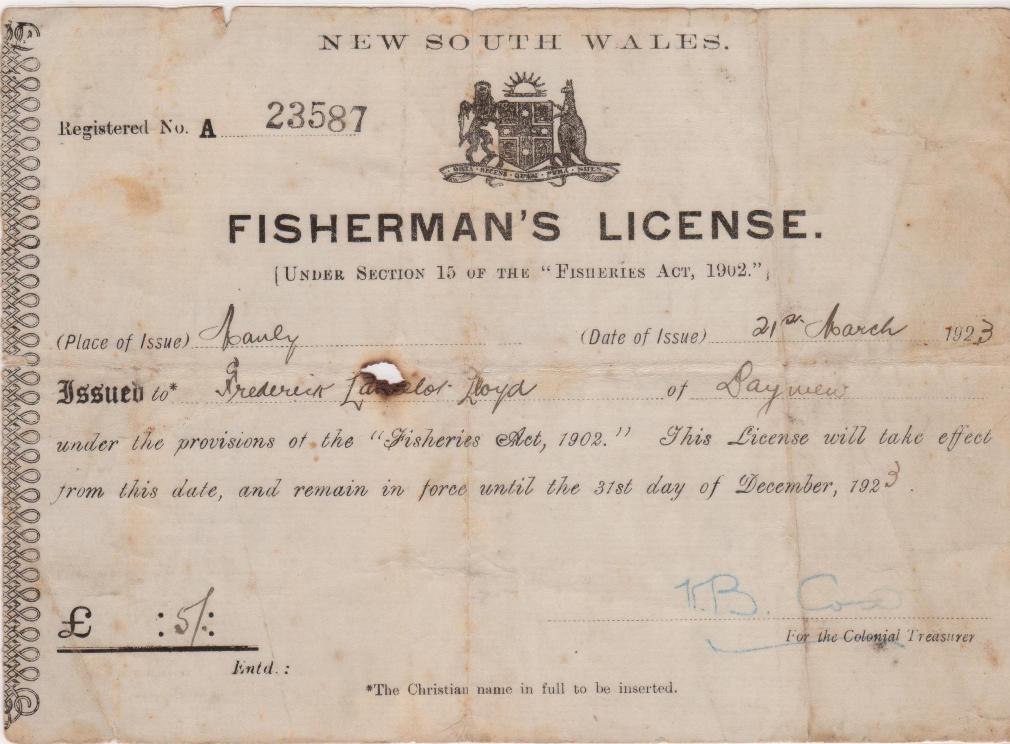
So they would take their catch back to La-Corniche and the Rainards would do the rest.
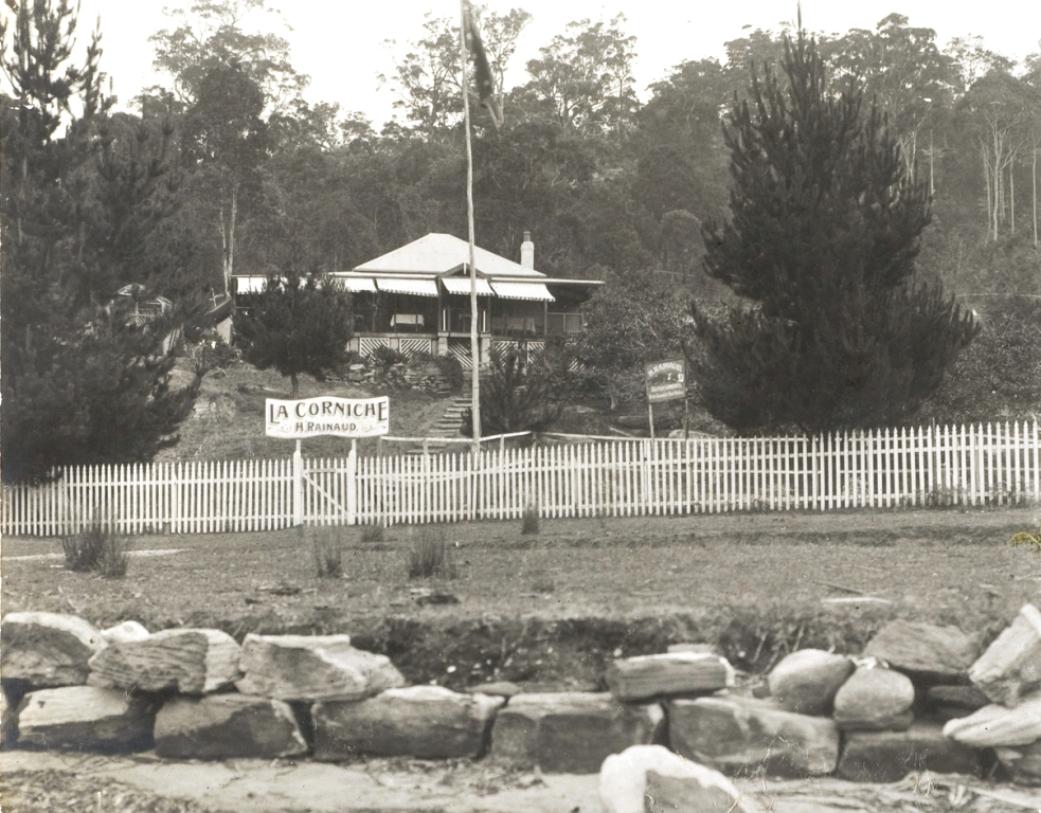
From The Mort Family Album, Image 131. H.Rainaud's restaurant La Corniche, Digital Order No. a1780131, from State Library of NSW: A note scribbled at side of this photograph says " Renaud - after his Restaurant in Macquarie Street - Morts Rooms-Chambers'.
Visit La Corniche, Bayview
I remember as a young boy visiting my Grandparents at La Corniche, it was as they say in the Real estate trade "Rustic". My Grandparents then moved to Oak St, North Narrabeen. My Uncle Ross built a house up on the top end of the La Corniche Block.
Earlier one of Fred Lloyds' sisters( I think Ethel Daisy, born at Newtown in 1874) married Cedric Williams' Grandfather.
WILLIAMS—LLOYD.—April 21, at Clifton, Burwood, by Rev. C. J. Prescott, John Williams, jun., of Strathfield, to Ethel Daisy, eldest daughter of W. F. Lloyd, of Burwood. Family Notices. (1897, May 8). The Sydney Morning Herald(NSW : 1842 - 1954), p. 1. Retrieved from http://nla.gov.au/nla.news-article14111230
John Jun. and Ethel Daisy had three children:
32460/1899 WILLIAMS KATHLEEN B JOHN ETHEL D MOSMAN
23301/1898 WILLIAMS JOHN Lloyd JOHN ETHEL D MOSMAN
969/1904 WILLIAMS CEDRIC Moreton JOHN ETHEL D ASHFIELD
This is the generation of Williams Pittwater may know more about - Cedric M and John L and their father were builders as much as boatbuilders of Pittwater, at bayview.
Cedric M is the father of Cedric Vincent Williams. Visit: Early Pittwater Paddlers, Oarsmen, Rowers And Scullers: The Williams
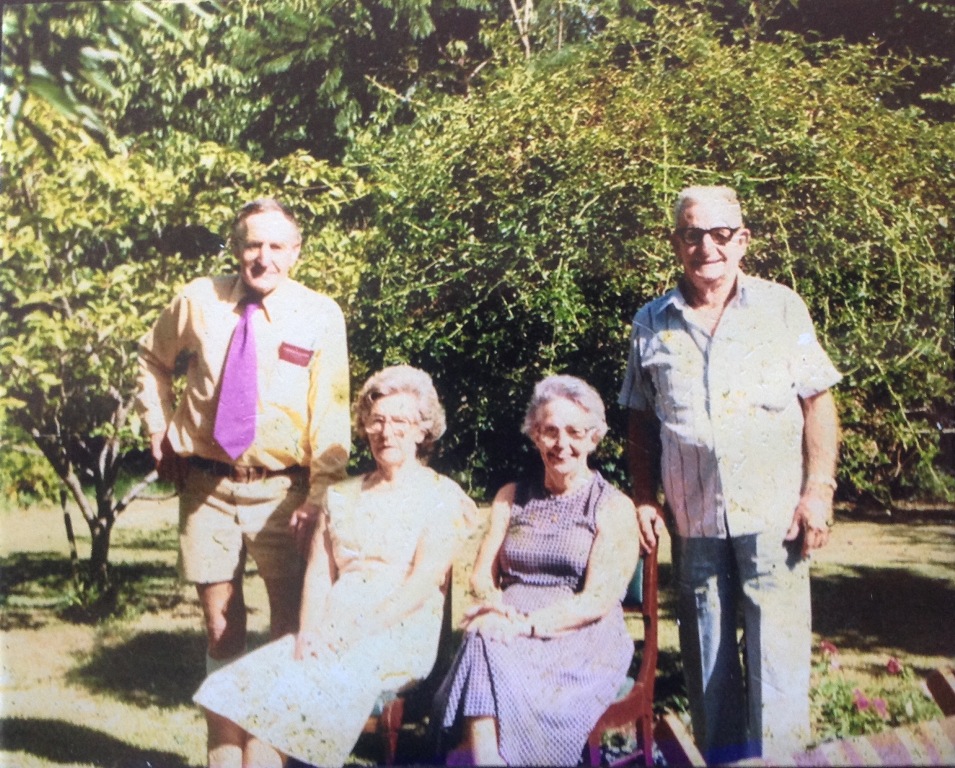
Dad and Auntie Maria, Lily and Ross
There was another family of Lloyds in the Warringah area when I was a young bloke. Bert Lloyd was a boat builder and fisherman, and was in Nth Narrabeen SLSC. Whereas my Dad Bill Lloyd was a foundation member of South Narrabeen SLSC where he made a rescue and received an award for bravery.
After the War he was a fisherman and had his boat and Fishermans shack at Long Reef.
By the way the Lloyds were Tea merchants (Hanks and Lloyd) and had a shop that became Nock and Kirby's after they went broke. They had coins made for advertising and the last shipment of coins went down with the Dunbar.
I ended up buying a house at 8 Baroona Ave., Church Point then sold out and moved out here at Gunnedah - that is now 50 years ago. I have been so lucky to have enjoyed the beach and the bush.'
The ReefCare Walks are free and a great family friendly event or for all ages for those who wish to know more about where they live.
ReefCare Walks 2018-2019
FREE GUIDED WALKS of Long Reef Aquatic Reserve with NSW Department of Industry & Investment Fishcare Volunteers will be held on the following dates:
Dates for 2018
Sunday 9 September 2018 12:30pm – 2:30pm
Sunday 7 October 2018 12:30pm – 2:30pm
Sunday 4 November 2018 11:30am – 1:30pm
Sunday 9 December 2018 4:00pm – 6:00pm
Dates for 2019
Sunday 6 January 2019 3:00pm – 5:00pm
Sunday 20 January 2019 2:00pm – 4:00pm
Sunday 17 February 2019 1:00pm – 3:00pm
Sunday 17 March 2019 11:30am – 1:30pm
Sunday 7 April 2019 2:30pm – 4:30pm
Walks are held subject to weather conditions
Bookings are preferred.
Please email Wendy to book:
longreefwalks@gmail.com
Establishment of Reefcare
Eight local residents – Rowena Barnett, Margaret Cox, Jane Easton, Ian Lambert, Lisa Lambert, Penny Lanser, Ben Wong and Peter Miller – met on Long Reef in 1997 and formed Reefcare and then joined ‘Warringah Friends of the Bush”. They started with a small Catchment grant of $1,700 to produce an information brochure about Flora & Fauna habitats at Long Reef Headland and the Aquatic Reserve. Their first project was to remove noxious weeds from the Fisherman’s beach grassland.
Today Reefcare group has a large group of community volunteers who meet each month to regenerate and conserve remnant areas of grasslands, sand dunes and marine migratory bird habitats on Long Reef’s Aquatic reserve. The group has raised grants totaling over two hundred thousand dollars for this conservation work. Grants received from NSW EPA, Coastcare, Natural Heritage Trust with full support from the Warringah Council.
Reefcare believes in the conservation of bird species, their habitats and Biodiversity. The impact of human activities can result in the loss of natural resources, which impacts bird life – an indicator in analysing Biodiversity priorities.
Find out more at: reefcarelongreef.org.au
NOTIFICATION OF LONG REEF AQUATIC RESERVE
IN pursuance of the provisions of section 16a (1) of the Fisheries and Oyster Farms Act, 1935, the area shown by hatching on the diagram hereunder is hereby declared to be the Long Reef Aquatic Reserve.
(1263) J. R. HALLAM, Minister for Agriculture.
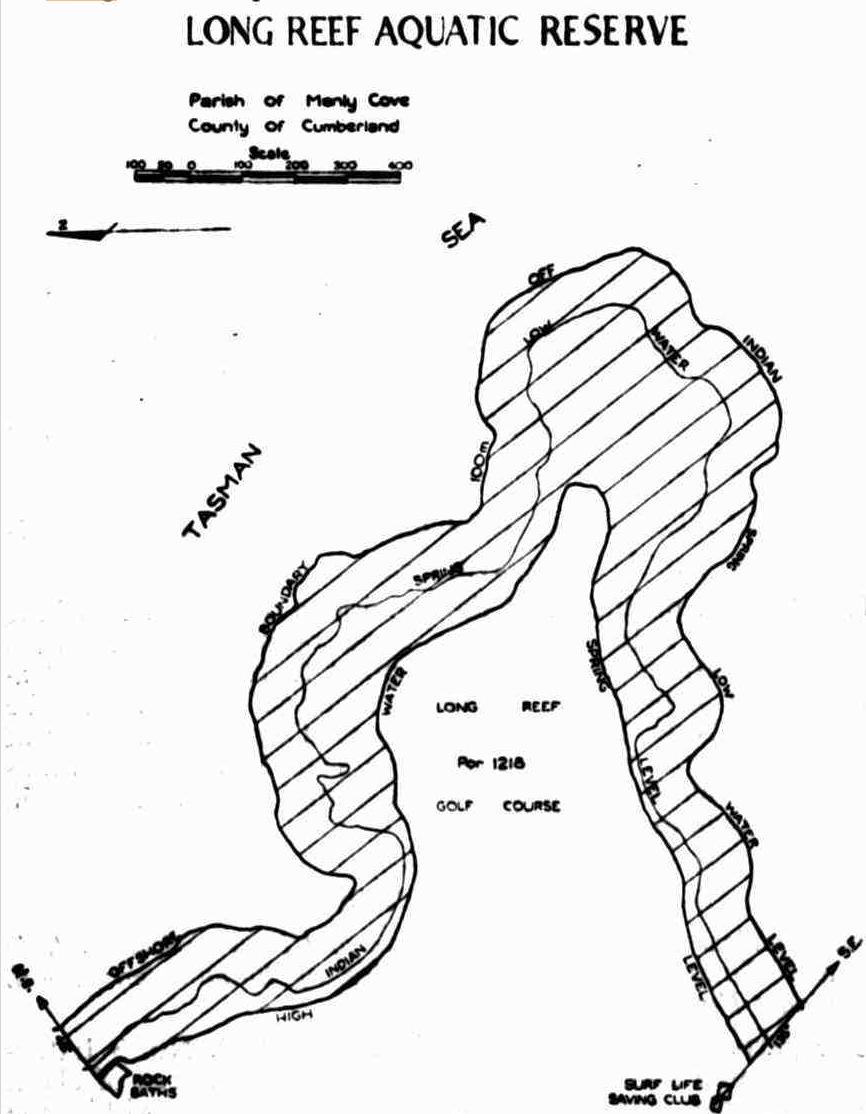
NOTIFICATION OF LONG REEF AQUATIC RESERVE (1980, May 30). Government Gazette of the State of New South Wales (Sydney, NSW : 1901 - 2001), p. 2787. Retrieved from http://nla.gov.au/nla.news-article231251611
Department of Agriculture,
Sydney, 17th September, 1984.
FISHERIES AND OYSTER FARMS ACT, 1935
Re-appointment of Long Reef Aquatic Reserve
Honorary Vigilance Committee
HIS Excellency the Governor, with the advice of the Executive Council, in pursuance of the provisions of section 7 of the Fisheries and Oyster Farms Act, 1935, has approved that the persons whose names appear in Schedule "A" hereunder be re-appointed to the Long Reef Aquatic Reserve Honorary Vigilance Committee in respect of the area described in Schedule "B" hereto, for a term expiring on 20th February, 1986.
J. R. HALLAM, M.L.C.,
Minister for Agriculture and Fisheries.
Schedule "A"
Jim Cooksey, 16 Beach Road, Collaroy.
Murray Curtis, 5 Florence Avenue, Collaroy.
Phil Lowe, 8 Essilia Street, Collaroy.
Lloyd Issaac, 11 Jamieson Parade, Collaroy.
Judith Colville, 20 Beach Road, Collaroy.
Anthony Reginald Pitkin, 25/33 Palamar Parade, Harbord.
Ian Sizeland, 36 Anana Road, Elanora Heights.
Schedule "B"
The Long Reef Aquatic Reserve as notified under section 16a(1) of the Fisheries and Oyster Farms Act, 1935, and published in Government Gazette No. 80 of 30th May, 1980. FISHERIES AND OYSTER FARMS ACT, 1935 (1984, October 12). Government Gazette of the State of New South Wales (Sydney, NSW : 1901 - 2001), p. 4992. Retrieved from http://nla.gov.au/nla.news-article231385974
Long Reef Insights
The name 'Long Reef' was in use by 1814. The land was granted in a 500 acre (202 hectares) lot to William Cossar, the Government's Master shipbuilder, who succeeded Thomas Moore in 1812 at the King's Dockyard. This stood on the western shore of what is now Circular Quay, roughly where the Museum of Contemporary Art is. Cossar held the post until 1821.
TRESPASS.-- Whereas daily Trespasses are committed on the Farm of Long Reef, the Property of Mr. William Cossar, by Horned Cattle, Horses, and Pigs:- All Persons are cautioned to keep the same off after this Notice, to prevent their being impounded. W. COSSAR. Classified Advertising (1815, June 24). The Sydney Gazette and New South Wales Advertiser (NSW : 1803 - 1842), p. 1. Retrieved from http://nla.gov.au/nla.news-article629134
Sydney. SITTING MAGISTRATE-R. BROOKS, Esq. Assize of Bread, the Loaf of 2lbs. 5d.
His Majesty's cutter Mermaid, Lieutenant KING, R. N. commander, will proceed on a voyage of discovery early in the ensuing week.
The government boat William Cossar, which was taken from hence some time since by a gang of runaways, all of whom fell victims to their rashness with the exception of a man named Smith (a gypsey), was yesterday brought back by His Majesty's colonial brig Elizabeth Henrietta, from the northward of Port Stevens. Sydney. (1819, May 1). The Sydney Gazette and New South Wales Advertiser (NSW : 1803 - 1842), p. 3. Retrieved from http://nla.gov.au/nla.news-article2178679
DEPUTY COMMISSARY GENERAL'S OFFICE,
Sydney, 24th April, 1819.
A LIST of Persons who have tendered SUPPLIES of FRESH MEAT for the Use of His Majesty's Stores, and from whom the Quantities expressed against their respective Names will be received at the different Stations herein mentioned.
AT SYDNEY.
When received | By whom tendered | Quantity | Residence.
May 15 |
Geo. Johnston, Esq. jun | 6000 | Annaldale
Mr. George Cribb | 6000 | Sydney |
James Meehan, Esq. | 6000 |
22
Mr. John Jamieson | 6000 | Coombsby
Mr. Isaac Nicholls | 4000 | Sydney |
Mr. Charles Tompson | 4000 | |
Colonel O'Connell | 6000 |
29
Mr. Samuel Terry | 6000 |
Mr. William Cossar | 3000 |
Mr. Andrew Byrne | 1000 |
Mr. Samuel Haslam | 1000 | |
Mr. James Squires | 1000 | Kissing Point |
Mr. Thomas Sylvester | 1000 | Sydney
Mr. John Andrews | 4000 |
Mr. George Crossley | 4000 |
June 5
John Piper, Esq. | 6000 |
Richard Brooks, Esq. | 6000
Henry Brooks, Esq. | 6000 |
12
John Oxley, Esq. | 6000 |
William Redfern, Esq. | 6000 | |
Robert Lowe, Esq. | 6000 | Bringelly
19
Mrs. King | 6000 | Europe
P. P. King, Esq. | 6000 | Parramatta |
Mr. Joseph Pye | 2000 | Eastern Creek |
Mrs. Mary Reibey | 3000 | Sydney
Mr. William Chalker | 1500 | Parramatta
26
D. Wentworth, Esq. | 6000 | Sydney
NOTICE. (1819, May 8). The Sydney Gazette and New South Wales Advertiser (NSW : 1803 - 1842), p. 2. Retrieved from http://nla.gov.au/nla.news-article2178687
Matthew Bacon purchased William Cossar's grants and by 1825 James Jenkins owned the land. James Jenkins arrived in Sydney in 1802 having been transported for stealing sheep but quickly propsered,along with his brother. He was an early landholder at Ryde and also in this area. Jenkins's eldest child Elizabeth inherited land from family friend Alexander McDonald at North Narrabeen in 1821. By 1825 James and his daughter owned all the foreshore land from Mona Vale down to Dee Why. Eventually the Jenkins family owned about 1,800 acres (728 hectares), the bulk of this being owned by the Salvation Army after Elizabeth passed away in 1900 per her wishes.
105. WILLIAM COSSAR, 200, Two hundred Acres, Parish of Manly Cove, commencing at the North-east corner of John Harper's forty acres, and bounded on the South by that farm by a line West sixty-four chains; on the West by a line North fifty chains; on the North by William Cossar's five hundred acres by a line East thirty chains to Dewy Lagoon; on the North by that Lagoon to the Sea ; and on the East by the Sea to the commencing corner.
Promised by Governor Macquarie on 21st August, 1821. Quit-rent 4s. sterling per annum, commencing 1st January, 1827. GRANTS OF LAND. (1832, October 31). New South Wales Government Gazette (Sydney, NSW : 1832 - 1900), p. 368. Retrieved from http://nla.gov.au/nla.news-article230389243
COLONIAL SECRETARY'S OFFICE, SYDNEY, 24th DECEMBER, 1833.
THE undermentioned GRANTS of LAND, advertised, on the dates specified, in the names of the original Donors, with a view to the preparation of Deeds, having been claimed by other Parties ;—Notice is hereby given to all Persons concerned, that the papers in the respective cases have been transmitted, for examination and report, to the Commissioners ap-pointed under the Act of the Governor and Council, 4 Gul, IV., No. 9, for hearing and determining upon claims to Grants of Land in the Colony of New South Wales, to whom the res-pective Parties are now referred.
Notice of 10th January, 1831.
NARRABEEN.
16. Robert Anderson Grant ............. No. 1 Claimant, Robert Henderson.
17. Richard Porter .................. Grant No. 2 Claimant, Robert Henderson.
18. Philip Schaffer .................. Grant No. 9 Claimant, Robert Mac Intosh.
...
89. William Cossar ................... Grant No. 105 Claimant, James Jenkins.
90. James M'Donald ................ Grant No. 106 Claimant, James Jenkins
Government Gazette Notices (1833, December 24). New South Wales Government Gazette (Sydney, NSW : 1832 - 1900), p. 532. Retrieved from http://nla.gov.au/nla.news-article230391262
COLLAROY
Landmark Disappears
PIONEER MEMORIES
(By J.G.L.)
Collaroy's oldest landmark is disappearing. A week or two hence and the last will have gone of the long, low cottage in which Miss Jenkins, a daughter of one of the earliest residents, ended her days about 16 years ago.
That was before Narrabeen had come into its own and before the latter-day people who took up a position on the southern end of Long Reef Beach, which is the chart name for the three-mile stretch of sand and blue water that runs from Twights to the headland on the north, decided upon a name of their own, and very naturally dropped on Collaroy. There was nothing else for it. Narrabeen was not then considered to be among the nicest places on the coastline. It was somewhat wild in more than one sense. Many of the old-time folk coupled it up with Clontarf and Chowder Bay, and passed right on to Pittwater, where there, was no suspicion and very little doubt.
THE OLD TRADER.
Collaroy got its name because one of the oldest of the Newcastle traders ran ashore in the small bay, a little to the south of the present surf sheds and house. The steamer was making for Sydney with a full cargo and lots of passengers, many of whom were returning after a successful race meeting on the Hunter. There was no excuse for the mishap. The night was clear and the sea quite calm. It was within an hour of daylight when the old paddle-wheeler came to an abrupt stop in the second line of breakers.
Some of the gear, of the steamer came to light only last week-end, just at time, as it were, to be in the same picture with the broken walls and the big, unlucky Norfolk Island pine which was chopped down one day recently because it happened to stand right in the centre of one of the new roadways which are being run through the old home grounds. A big current has torn the southern end of the beach to pieces, exposing a lot of anchor-chain, a big wooden pile used for one of the straining lines in the efforts to refloat the steamer, and a fire bar or two, which would probably have been thrown overboard to lighten the vessel. The fire bar, thick with rust and barnacles, I carried away home.
THE JENKINS HOUSE.
The old Jenkins home was built on the 314 acre paddock and bush lot on the western side of the main road. That parcel of land, with the balance on the sea side of the road, was originally granted to Mr. William Cossar by the Crown. A lot of the country, especially that portion over which the Long Reef golf course now runs, was under cultivation in those early days. Sheep were kept on the hilly land behind the old homestead. Some of the old mesh wire fence which ran round the sheep paddocks can still be found. Very soon now all traces of the Jenkins' efforts will be wiped away. Mr. Ben. Tabsley was another of the early workers, round Narrabeen. He grew wheat and maize on the flats near the seashore. I have not yet been able to trace the exact location where Mr. Tabsley did his pioneering.
FRUIT-GROWING.
Mr. Cyrus E. Fuller, well known in Sydney, Bible Depot and Christmas card specialist, also was among the early workers round about Narrabeen. He planted : a big orchard under the foothills, between Collaroy and Jenkins Streets, and made quite a success of the fruit-growing. About 30 years ago Mr. Twight, still a resident, leased the Fuller orchard, and carried on the business of growing Early Newington peaches and Lord Nelson apples, passion-fruit were natives on the area. After a big blow one could shovel up the fallen fruit. Mr. Twight says that he many a time sold extra quality Newington peaches at 6d apiece. Fancy prices were easily obtainable. Travellers to and from the Hawkesbury bought eagerly.
Traffic was by coach, cart, and sulky. Mr. Black had much to do with the coaching. He carried the passengers who were doing the round trip, via Windsor and Sackville Reach. Mr. William Maddock, an old city bookseller, did the hooking for that run. Two journeys were made each way every week. The Hawkesbury trip was always recommended to visitors from far afield. I remember selling tour tickets to Mr. R. A. Proctor, and also to the much-travelled Mr. Smythe, who was his agent at the time he toured the Australian capitals with his talks on astronomy.
PLENTY OF SPORT.
In those days gillbirds were plentiful, and much shooting was done. Fishing, too, was good both in the lake and outside, on the reefs. It was the sport that attracted Mr. Gordon and Mr. Dillon, two expert linemen, who built small homes near the present "bundy" site. Mr. James Wheeler, who is now the oldest resident in the district, was familiar with Narrabeen when the place was in its infancy. His father many a time sailed a big ballast boat down to The Basin, on the north side of Long Reef, and spent a week or two on his lakeside grant, away from the worries of the city to which he belonged. His business, I understand, was In the Blue Bell Hotel, somewhere in Phillip Street.
All the old hands know that it was possible, even in years gone by, to spend a very pleasant day at Narrabeen. I am told that two well-known sportsmen resident in Manly made a remarkable return after a day on the northern beaches. They had hired one of the creamy horse- vehicles to take them out and home. All went well on the return until the driver lost his balance and tumbled off In the sand by the roadside. Neither of the sportsmen or the ponies knew of the mishap until the driverless carriage pulled up at the livery stables within a short distance of the old-time pier. How the coachman got home I do not know. More than likely he put in part of the night on the Collaroy. For a year or two the vessel was the Saturday night home of many a "tramp" and fisherman. One of Sydney's most successful booksellers told me that he had a fore-cabin "possie" on more than one occasion.
All these old-time Items and Interest are disappearing fast. Collaroy and Narrabeen will shortly be numbered among the nearer seaside suburbs. All the old-time links are being broken. Who knows when the sea will again leave the connections which helped to lift the Collaroy over the sand-bar and out into deep water; or who will raise another Norfolk Island pine to stand on the landscape with the giant which for half a century cast its welcome shadows across the lonely home threshold where Miss Jenkins spent more than half her life? COLLAROY (1925, October 3). The Daily Telegraph (Sydney, NSW : 1883 - 1930), p. 7. Retrieved from http://nla.gov.au/nla.news-article245046727
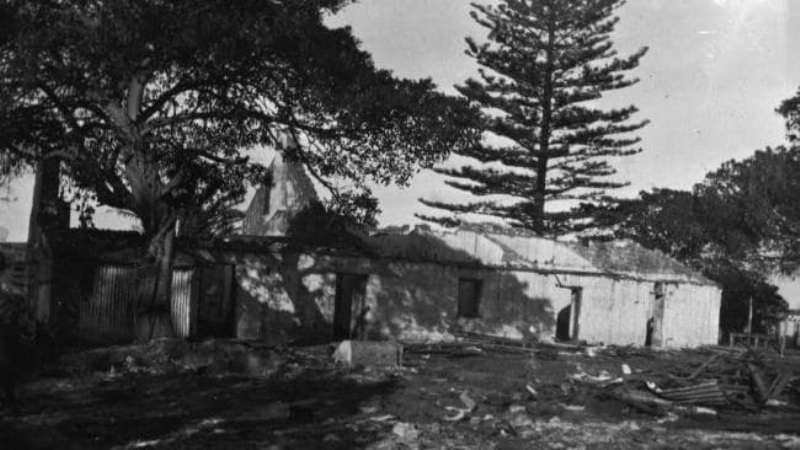
No 24. 'Ruins of Jenkin's home, Collaroy'. From album Historic pictures of Manly and Pittwater, 1856-1937 / compiled by Percy W. Gledhill, courtesy State Library of NSW
MIGHT HAVE HAD £250,000, BUT GETS £2/10/- A WEEK
Sydney- Man Who Fought Salvation Army for Ancestral Estate
THE ARMY'S "NO BEER" COVENANT.
SO passes the glory of the world — in a mist of Blood and Fire. It is as well for Phillip Jenkins that he is a philosopher. The Jenkinses are gone — save for him, and he is 72, and childless. The homestead, built a century ago to nurse a proud line of colonial barons, has crumbled under the hands of the demolisher. The erstwhile forest lands are bare grassy hills scarred with new roads, and the old farm fields sprout a harvest of houses. Flivvers buzz over the landscape, trippers, weekenders, outer-suburbanites and market-gardeners throng the fertile valleys, and the estate agent is everywhere. And only yesterday all was silence, all was solitude.
The Jenkins held sway over a thousand acres, another settler ran cows back in the hills, a former assigned servant of James Jenkins tilled his land a little way up the coast, and between there and Brook-vale there was no one else to trouble the sea, and the sky, and the sand, and the scrub. As Phillip Jenkins grew up, fishing off Long Reef, hunting in the hills, riding over the estate that passed to his aunt Elizabeth, who had adopted him when his father died, others came to the district. It was still a wild region, the newcomers were wild folk, and wild deeds followed. They will still show you the place in the bush behind Narrabeen where murder stalked one night, and tell you that a convict came there to find a brutal master of earlier times, and strike him down. They will tell you how many a man was "put away" in those dark times by neighbors ill-disposed, and hint at wild orgies in the "Narrer Bean Camp" of the blacks — so called from the long slender native beans that grew beside the lake there. This was Phil. Jenkins' environment, but he was not of it. Up in the old homestead he lived under the care of an eccentric maiden lady who saw sin in almost all things, but who husbanded carefully the estate her father had left to her care. Phillip never thought hut that he would be heir to the lands his grandfather had pioneered. It was early in last century when James Jenkins came from England and started a shop in Sydney. Later a land grant of 200 acres at Deewhy was made to him and to one, William Cossar, a grant was made of 600 acres situated to the north of Jenkins' land. Jenkins later bought Cossar's land as well as 188 acres known as Sheep Station Hill on the northern side of Narrabeen lagoon. On re-measurement in after years this land is shown to be 259 acres. When Jenkins died, over 900 acres passed to his three surviving children— Elizabeth, Martha, and John. The other son, James, had died, leaving his son, Phillip, another part of the original holding-, which he later lost.
In 1885 Elizabeth, the leading spirit of the three, became interested in the work of the Salvation Army and from time to time she made gifts of money and land to the institution. Finally, in 1894 she was instrumental in having the whole of the land transferred to the Army in return for an annuity of £175, and an undertaking to take over her liability in connection with certain bank shares which she held. Miss Elizabeth Jenkins died in 1900 and her will under which she left all her remaining estate, amounting to £120, to the Army also, was attacked by Phillip Jenkins on the ground of incapacity and undue Influence.
Evidence in the Equity Court showed that she was an eccentric woman. The Judge refused probate, which had been asked for by Brigadier John Hendy of the Army, who, with Thomas Coombs, had been appointed executors. On appeal to the Full Court in 1901 this decision was reversed, Hendy and Coombs being granted probate. If the will could have been proved invalid, an attack would have been made on the deeds of settlement. At the time the deeds were executed an understanding was reached between members of the Jenkins family and the Army that although the latter was legally entitled to assume possession of the property, nothing would be done to disturb Its condition during the lifetime of any member or the family. This agreement was observed by the Army. Nothing was done until John's death about 1911 — Martha had died many years before. The tramway to Narrabeen was built in 1911-12 and opened for traffic on Eight Hours' Day, 1912. On that day the Salvation Army held its first sub-divisional sale, when land adjoining Collaroy Beach averaged over £5 a foot. Conditions of that sale — and of all subsequent subdivisional sales— were that all fences erected must be approved by General William Bramwell Booth, and that the purchasers and the registered proprietors for the time being must not sell, permit to be sold, or connive at or be parties to the sale of any intoxicating liquors on the land. In addition, there was a condition in respect of the first sale prohibiting the carrying of liquor In the land.
Subsequently the Army applied to bring one part of the land, the area of which was 824 acres, under the Real Property Act, but the Crown claimed that Deewhy Lagoon of 62 acres, which was included in the application, was not a part either of the Jenkins or the Cossar grant. The present Chief Justice, sir Philip Street, sitting in Equity, held that the lagoon waters were not tidal, waters, and that they, were included in one or other or both grants, Followed an appeal, about 1910, to the High Court, which decided that the Crown was entitled to all the area from time to time covered by water. As Deewhy lagoon was continually being drained, the judgement that the ownership of the land would shift from the Crown to the Army, and vice versa, with the covering and uncovering of the land by water. The obvious difficulty of interpreting the ownership based on this unusual judgement resulted in a compromise being reached.
The estate, for the most part a narrow strip skirting the coast from Deewhy to Mona Vale, comprised originally about a thousand acres. The Salvation Army authorities have shown careful discrimination in in the manner of their throwing the estate open for sale, having regard to its value in the coming years as an aid to the Army's work. Large sums of money have been laid out in the developmental work— — in the construction of roads, bridges, etc. To date about two-thirds of the total area has been disposed of, and further sales are planned for the early future. On the estate the Salvation Army has established a colony for aged men, about 85 being in residence there: also a large Home for Boys. A section, at Collaroy, is set apart for the purposes of a seaside holiday ground — used, among, other things, as a fresh-air camp for poor mothers and children from the city and suburbs, also for children from various metropolitan Institutions. In addition It provides a summer camping ground for the Army's Life Saving Scouts and Guards and other young people. Then there are erected on the estate two Salvation Army halls —one at Deewhy and one at Collaroy. The Army has been generous in its gifts from the property for public purposes, such as recreation grounds at Dee-why, Collaroy, Narrabeen, and Mona Vale. In addition to the usual statutory area for reserves, it set apart for similar purposes - a strip, of foreshore extending from Narrabeen to Mona Vale. The popular Griffiths Park, comprising at 177 acres, probably the most attractive section in the whole district, was included in the original estate. Proceeds of land sales are credited to a central fund at headquarters, for the purpose of assisting in the erection of Institutions for the care of the friendless and needy, also halls in localities where it is not possible locally to raise sufficient funds. ' Further, one-third of the net proceeds of sales is devoted to the missionary operations of the Army, which are now well established in India, Burma, China, the Dutch Indies, Korea, Zululand, Nigeria, and Kenya, From Australia many Salvation Army officers have gone forth to these lands in connection with missionary service. In all this, the Salvation Army claims that the intentions of Mr. and Miss Jenkins, from whom the Army derived this property, are being observed both in spirit and In deed. Not one penny of the proceeds of the estate, Army officials make clear, is used for the personal benefit of any, but those for whose aid the Army
During the past two years (owing to expenditures required for development purposes) the Army has not benefited at all from the estate. But prior to that period, for some twelve years the proceeds of the estate have assisted the funds of the organisation to the extent of about £9000 a year. Meanwhile, Phillip Jenkins . is philosophical. He has a roof over his head, a few shillings to keep the wolf from the door, a few old friends, and a good wife. He has farmed his little block in the past, but now, getting on in years, and in poor health he sits on his verandah watching the golden lemons dropping off his trees for want of a payable market, rather like golden coins slipping from a man's hand. He is philosophical. If ever he does cry out against Fate, rate's answer, it seems, is a lemon.
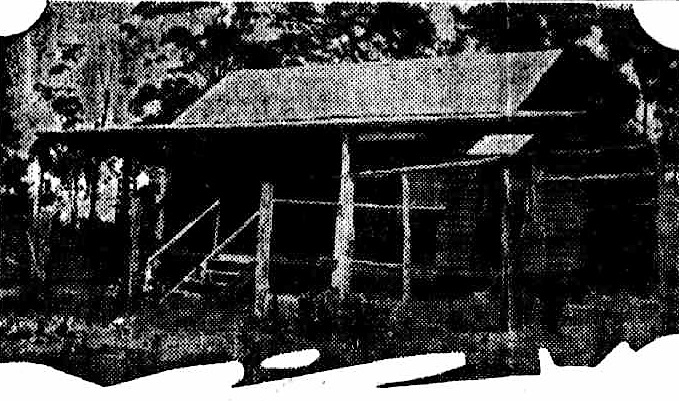
Phillip Jenkins' Cottage in the Narrabeen Bush
IN a weatherboard cottage in the bush at Warriewood, a few miles from Narrabeen, lives a man who, but for an old woman's whim, might today be worth, anything up to a quarter, of a million pounds. He is Phillip Jenkins, sole survivor of a family that settled in the district 100 years ago, and to-wards the end of last century owned, land from Narrabeen to Deewhy
THAT land was transferred to the Salvation Army by Phillip Jenkins' aunt, Miss Elizabeth, and approximately £108,000 has already accrued to the Institution from the sale of a portion of the property. Jenkins fought the Army at law and lost. Now, he receives from the Salvationists an annuity panning out at £2/10/- a week.
.jpg?timestamp=1534833646312)
PHILLIP JENKINS
MIGHT HAVE HAD £250,000, BUT GETS £210- A WEEK (1928, November 3). Smith's Weekly (Sydney, NSW : 1919 - 1950), p. 2. Retrieved from http://nla.gov.au/nla.news-article234382625
Visit: Roads To Pittwater - The Pittwater Road
DEE WHY BEACH MANLY
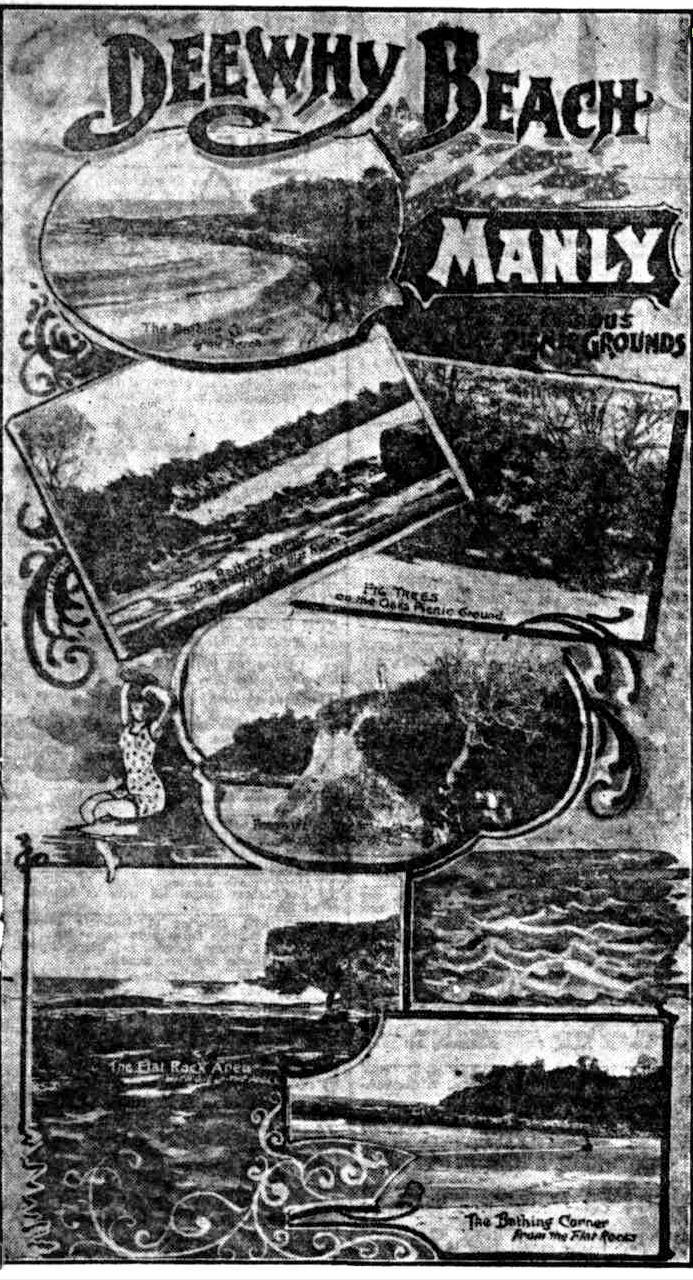
in Sydney's peerless necklace of ocean Jewels Deewhy Beach Is a brilliant gem. It Is one of the most beautiful spots between Manly and Narrabeen — about seven minutes' walk from Pacific Parade, which will shortly be connected by tram to Manly. Dee why Beach has long been' known as one of the choicest picnic resorts around Sydney, but the great .spreading movement which Is now taking place is about to cause this spot to be embraced by the builder, and to become on ideal place of residence for those who either wish to retire In peace to some scene of peace and beauty, or to those who love to spend their week-end where the water is bluest, the sand softest, the surf gentlest, and the air most invigorating.
This resort is now particularly in the public, eye because the famous Oaks Picnic Grounds, which have been known for years as one of Sydney's most attractive pleasure resorts, have been subdivided, and will on Anniversary Day be thrown open to the people for settlement. These grounds are beautifully situated. They are right on the beach front page at Deewhy Head, and command a scene where Nature reposes most gracefully. At the southern end, where the beach touches the estate, there Is fine shelter and a succession of flat rocks, amidst which are many clear crystal pools, admirable for bathing. From southerly busters or westerly gales It Is well protected, and those who make their homes here may enjoy all the pleasures of the sea side without any of its disadvantages.
For the angler this will make an Ideal site for a home, as the schnapper grounds are on the 100ft. reservation outside the eastern boundary, while Long Reef is opposite and Deewhy Lagoon lies at the back of the beach. The 100ft. reservation from the high-tide line enables one to ramble amongst the rocks to view the cliffs 100 to 120 feet high, to study the peculiar pot-holes 10 to 12 foot deep, and to enjoy in the shade the glory of the Pacific. Not only is Deewhy Beach a perfect place for the residence of the city man who, having been confined to his desk all the week, needs a week-end home by the sea, where it Is most restful, but It Is a fine spot for the squatter who would spend his summer at the seaside or the retired man who is seeking health and, peace.
Deewhy Beach Is really not a great distance from the city when one considers that the electric tram, when constructed will be able to land passengers to the Manly boat In fifteen minutes. The whole trip to and from Sydney is therefore well under the hour, but the main point Is that it Is a decidedly refreshing and enjoyable one. To the land speculator the Deewhy Beach Estate offers exceptional Inducements, for, judging by experience in regard to ocean frontages along this coastline, land values are bound to go rapidly ahead. Manly furnishes a striking example of what money can be made by In vestment In this direction. Land sold, only ten years ago from £10 to £15 per foot Is now worth from £30 to £100.. Manly's growing popularity Is bound, when the tram Is extended, to embrace Deewhy Beach, and there is little doubt that values will rise In similar proportion to those at Manly. A great crowd Is expected to attend the sale of the Deewhy Beach Estate on Anniversary Day, and Messrs. Horning and Co. have so provided that the trip may be a picnic as well as a business excursion. DEE WHY BEACH MANLY (1911, January 14). The Sun (Sydney, NSW : 1910 - 1954), p. 4 (FINAL SPORTING). Retrieved from http://nla.gov.au/nla.news-article221565666
Fishing at Collaroy, Long Reef and 'Fisherman's Beach, dates from pre European settlement times and was the occupation of many an early settled farmer.
Visit:
Narrabeen Prawning Times - A Seasonal Tide of Returnings
Oystering in the Pittwater Estuary - Oyster Kings and Pearl Kings and When Not to Harvest Oysters
Narrabeen Lagoon And Collaroy Beachfront: Storms And Flood Tides Of The Past
Pittwater Fishermen: Barranjoey Days Pittwater Fishermen: Great Mackerel, Little Mackerel (Wilson's Beach - Currawong) and The Basin
Even when tugs were sent out to try and pull the Collaroy Steamer off Long Reef, fishing was the preoccupation of many aboard at least one of the tugs sent:
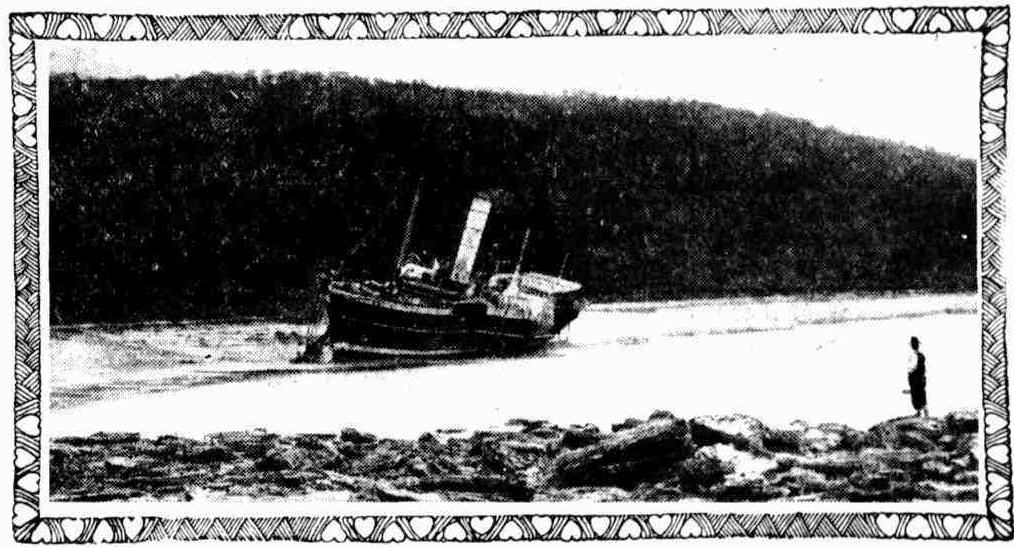
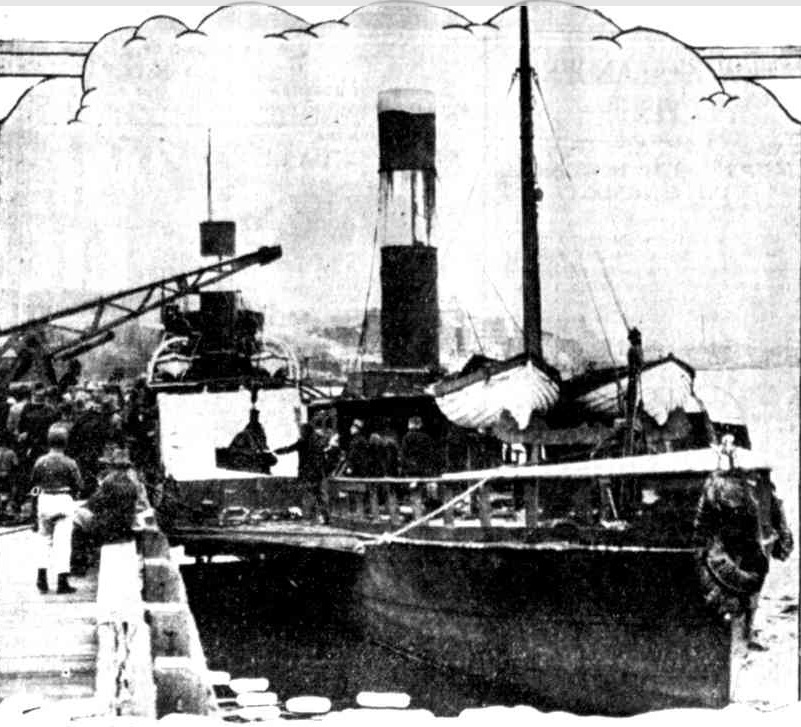
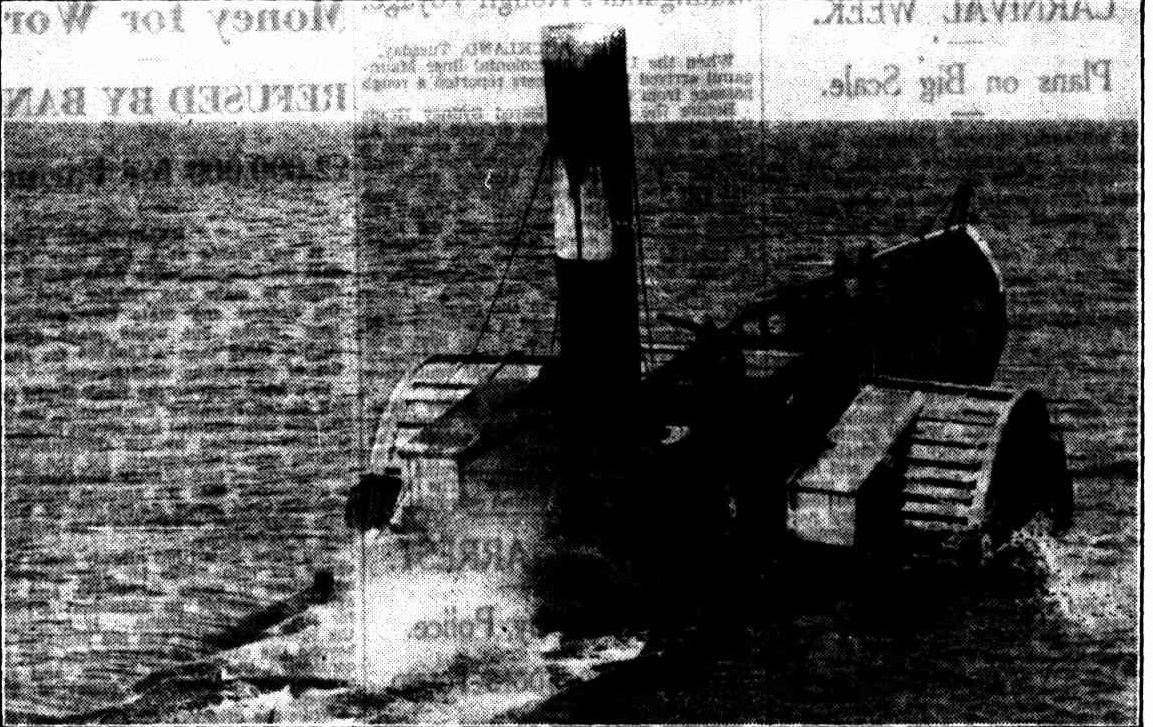
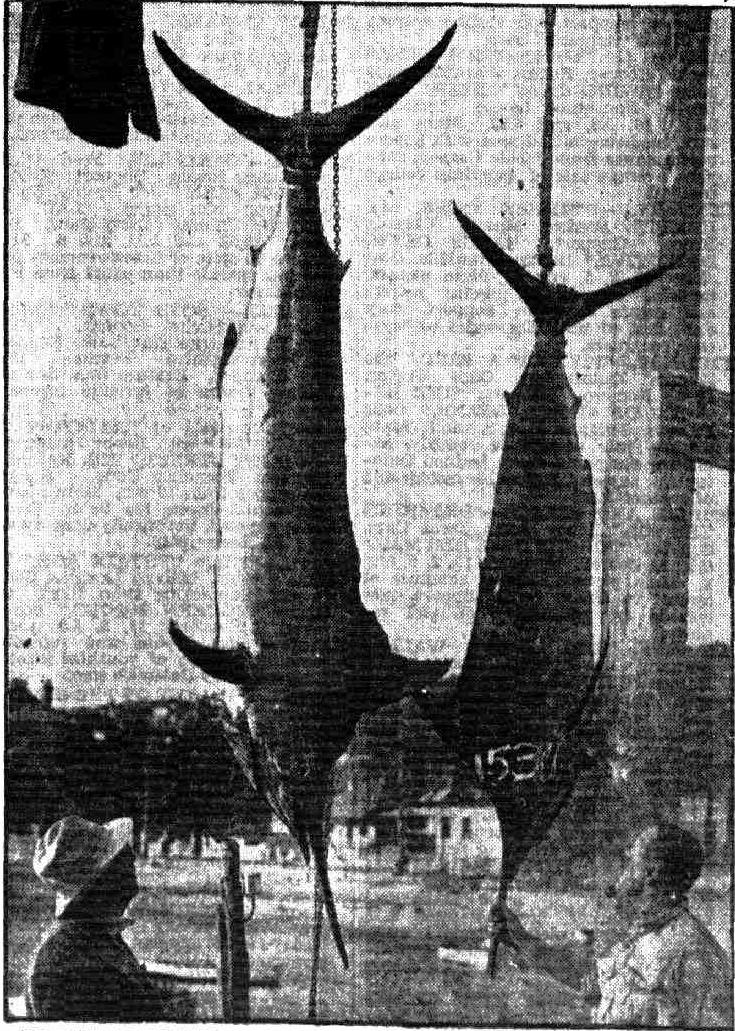
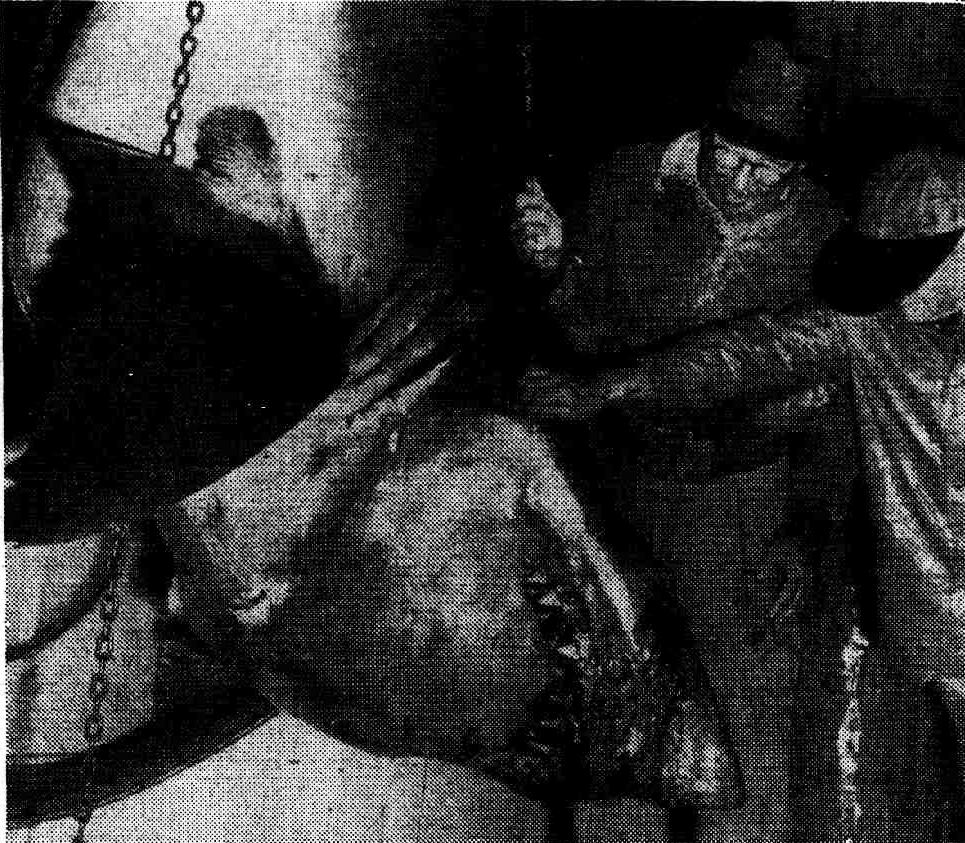
GEOLOGICAL CHANGES AT COLLAROY. SCENE AT THE SOUTHERN END OF THE BEACH.
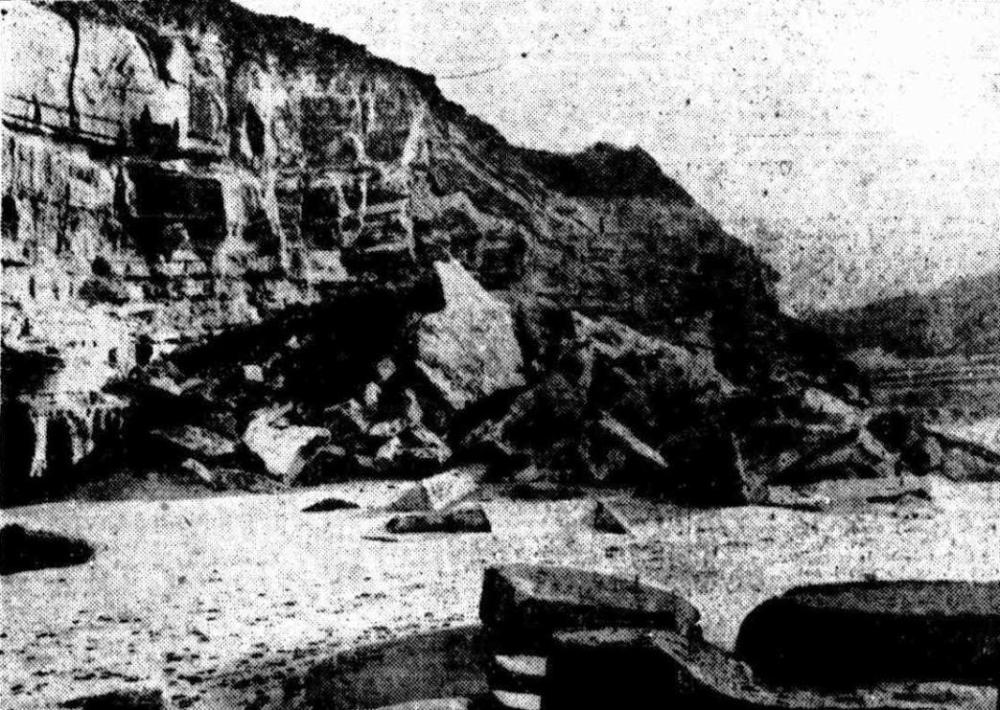
The Rev. R T Wade, of Killara, who forwarded to us the photography of which the above is a reproduction, writes - "The headland at the south end of Collaroy Beach consists of alternating beds of sandstone and shale. The lower beds, because of oxidation and other chemical changes, have expanded, and forced the upper beds into the small but well-marked anticline in the centre of the view." GEOLOGICAL CHANGES AT COLLAROY. (1925, April 13). The Sydney Morning Herald (NSW : 1842 - 1954), , p. 10. Retrieved from http://nla.gov.au/nla.news-article16212688
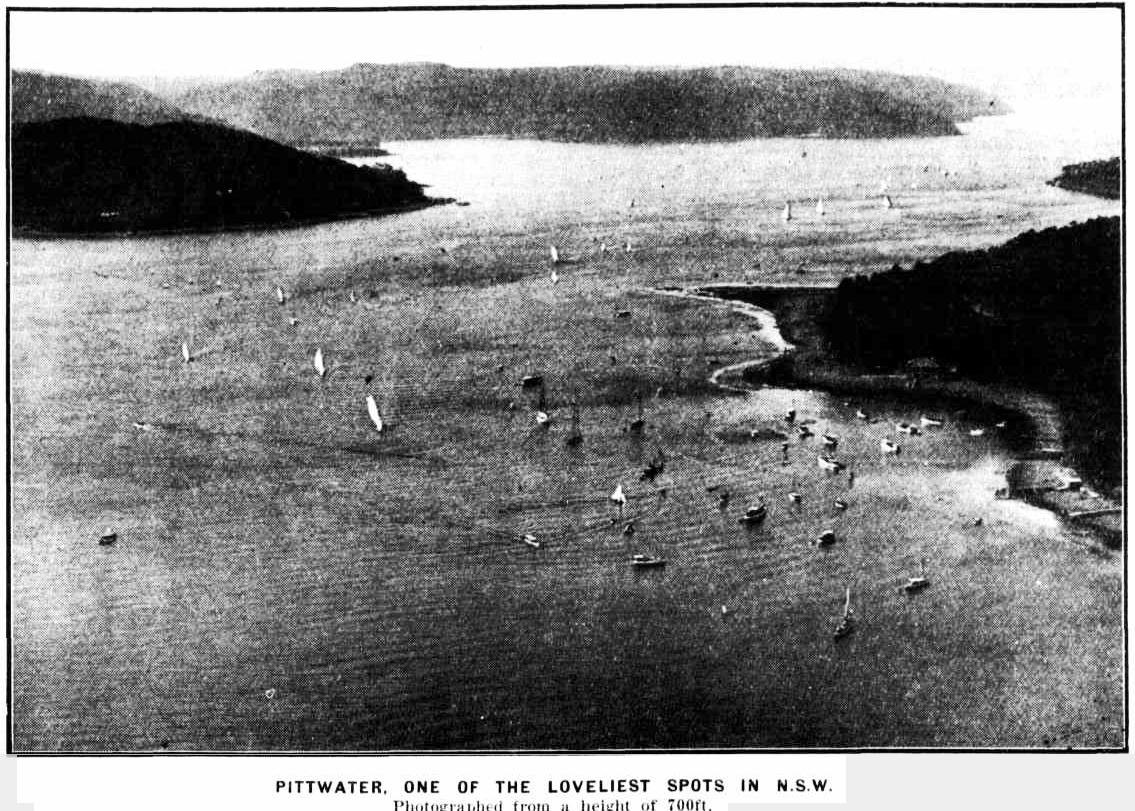
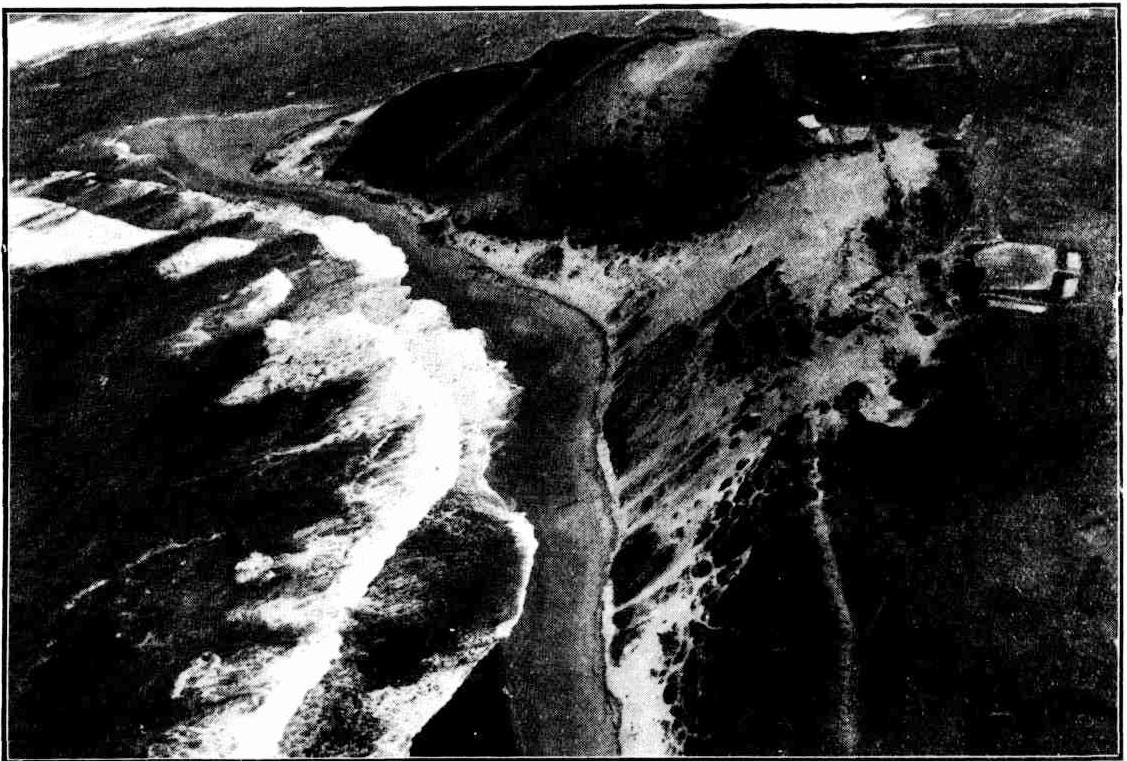
Timeline of Wrecks and Scuttled Ships in The Long Reef- Collaroy- Narrabeen area
1983 VERDIER, barge scuttled off L.R. as artificial reef.
1980 BELLUBERA, Sydney/Manly Ferry scuttled.
1977 HIMMA, tug scuttled.
1976 PYRMONT II, barge scuttled.
1976 DEE WHY, Manly ferry scuttled off Narrabeen.
1976 MEGGOL, oil barge scuttled off Narrabeen.
1948 HORN, Launch off LR.
1942 ALTAIR, Ketch north side.
1931 ECLIPSE, Steamer.
1920 CHRISTINA GOLLAN, Steamer four miles off L.R.
1919 SS MYOLA, Steamer founded.
1913 SS EUROKA, paddle steamer founded.
1894 GREYHOUND, steamer of LR.
1889 DUCKENFIELD, steamer L.R. north side.
1881 COLLAROY, Paddle Steamer hit reef and grounded Collaroy.
1877 SYLPHIDE, barque sunk off L.R.
1875 SUSANNAH CUTHBERT, schooner founded.
1868 MIMMIE, cutter L.R. south side.
1868 MOUNTAIN MAID, Brigantine off LR.
1865 ELLEN, schooner founded.
1865 AENID, Cutter.
1860 SWIFT, Ketch off LR.
1860 MESSENGER, schooner founded.
1816 WINDSOR, sloop.
Information : National Shipwrecks Database website
Some of these, apart from the more famous 'Collaroy' grounding:
By High Road to Newport AND BROKEN BAY VIA MANLY.
(See illustration on this page.)
From Sydney to Manly, with its seven miles of water stretch, is a delightful trip. One always gets a regular and excellent steam service. A never varying series of pastoral laud pictures and rugged rock-heights come and go on the route],and enough of broad ocean is at hand, 'twixt head and head, to fulfil the conditions of an open sea trip. The picturesque scenery that skirts these aboard up north as far as Newport, Broken Bay, is the boast and delight of Manly folk, and the various stages plying to and fro to –that retreat daily are crowded with tourists from all parts of the colonies, who hold that the sigh of the Queen City of the South have not been "done" if this, wholesome watering place be missed. The tourist who steps on to the substantial pier at Manly has but a few step's to tread to reach a thoroughly-horsed stage, always waiting twice a day to convey him to the peaceful paradise facing the Pacific. –
“All aboard!" says the weather-beaten driver, .and a full coach and a fresh team scamper, to the tune of merry Jehu's whip, through the main thoroughfare of "our village." Villas and villas float past in quick succession, until the breath of ¡a pure Australian bush, mingled with scented, sea air, warns the pleasure-seeker that he has fairly commenced his trip to Newport. As the coach sweeps on to the turn leading to the high road, the eye involuntarily catches sight of a huge effigy of a kangaroo hewn from sandstone, and resting on a pillar of similar substance. This eccentric image is erected on a rocky elevation, and overlooks Manly far out into the sea. Its strange existence is in the scroll of Manly lore, and is ascribed to the-extraordinary humor of a mason who had too much time on his hand." In fact, he built it for pleasure, not for gain.
As the road shortens Curl Curl Lagoon is passed, and a rapid glance at the heights above reveals the famous Queenscliff Nursery Dairies and Chinese gardens are met with next, and, as an evidence of the presence of the former, the milch cow pastures by the wayside in peace and plenty. The made road to Queenscliff, or Ocean View, branches hereabouts.
A winding road and a quick turn brings in a deserted habitation which local legendary lore labels "The Haunted HOUSE " This place has a history. It is reported that its last tenant would neither leave it nor pay his rent. The landlord, whose patience for months was overtaxed, decided to be freed of this bad tenant; so he "fired" him out as an aboriginal would " fire" an opossum from a stump. The grimy stone walls of the house now alone remain, and are guarded in strange contrast by the ghostly murmurings of four stately cypress trees. Houses on the roadside appear at lengthened intervals as the destined distance lessens, and the bush foliage, studded with singing feathered life, manifests its plenitude on either side of the roadway. The beautiful lakes of Narrabeen are next encountered.
As the coach pursues its onward march; numberless fish are to be seen jumping in and out of the water, and are the only apparent motors that agitate its placidness. Long Reef, in the vicinity of which the good ships Collaroy and Duckenfield foundered, is close at hand. Its three or four miles of incomparable beach is watered with peaceful regularity by as blue a span of ocean water as can well be imagined. In this locality, too, a streak of sand cuts the shore waters, and forms what is known as the DY picture. The bleak spray from the rollers here is at times as dense as a winter mist. Further on a 4-acre plot of land is being cleared, it is said, for the purpose of supplying a reformatory in connection with the Salvation Army. The land, it is further understood, is the gift of a philanthropic maiden lady residing in the district.
Rocklily is next met with, and discloses a number of orchards, farms, an hotel, and two churches(Anglican and Roman Catholic). Religious service is not, however, too often held in the locality. Ministerial visits occur about twelve times a year.
The Bay view-road turns off a little further on, and a run of some three or four miles furnishes a wealth of wild scenery. Towering gums, box, and ti-trees mingle here in abundance with cabbage trees, and palm, and fern growths. At Church Point, the terminus for the stage, a fine view of Broken Bay is disclosed. Scott Island, which is said to be a Government grant to its present holder, rises in the near distance, and evidences a wealth of rude vegetation. Lion Island; which takes its name from a similarity in form to the king beast, keeps everlasting vigil at the bay entrance, and is plainly visible at this point. Erected on the point is a small wooden church devoted to the Anglican body, and at its rear is a small cemetery which contains five or six graves. John Redman, aged 78, and Mary Olliver, aged65," as the headstones read, tell, doubtless, that two old residents of the district lie here. The school house which is in close proximity, is in charge of Mr. Morrison, and cost 850 pounds. Returning to the main road, another four miles or so bring the tourist to his destination. What a fairy spot it is-this Newport! Churches, post and telegraph offices, settlers' houses, a school, a hotel, and a huge boarding-house tell of the growing importance of the place. A fine substantial wharf here receives produce for the various villages in the district, and at certain intervals large ocean steamers carry excursionists from the city to enjoy the lavish scenery that surrounds the haven. Looking far into the bay the course of the graceful Hawkesbury is seen winding its way through the rugged headlands and graceful glens that cluster near its shores. Of the many miniature bays that cling round the shores of Broken Bay none has so much peaceful grandeur and natural beauty to reveal as Careel Bay. Its waters of beautiful blue are snugly protected by ponderous heights, whose facings shoot forth vegetation of gaunt, green growth. The fisherman here plies his calling with profit to himself and pleasure to his market. Pleasure boats, too, float on the placid waters of Careel, and no true excursionist leaves Newport without visiting the subject of our illustration.
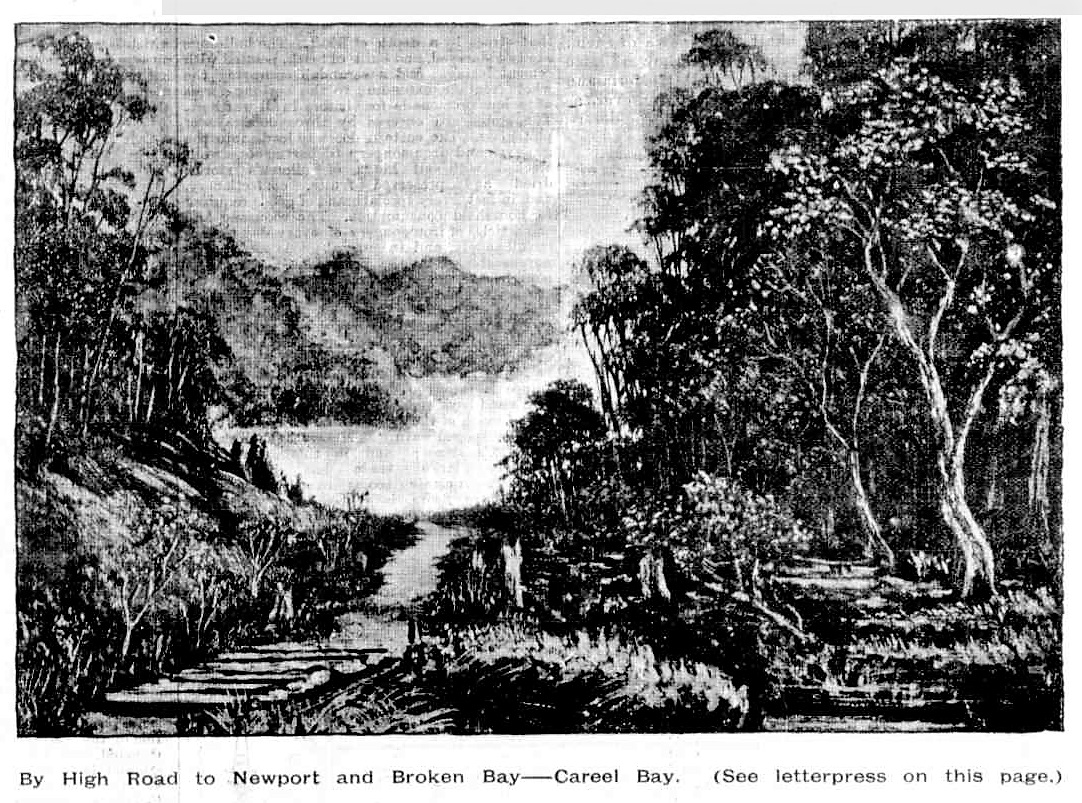
By High Road; to Newport and Broken Bay---Careel Bay. _ (See letterpress on this page.)
By High Road to Newport. (1891, January 3). Australian Town and Country Journal (NSW : 1870 - 1907), p. 34. Retrieved from http://nla.gov.au/nla.news-article71247615
LOSS OF THE S.S. GREYHOUND.
A report was made at Sydney on Monday by Captain D. Callaghan respecting the loss of the North Coast Steam Navigation Co.'s steamer Greyhound. He states that the vessel collided with some floating wreckage about six miles N.N.E. of Long Reef. Some of it got foul of the propeller, and brought the steamer to a standstill, while one of the stern plates was started, and the water gained so rapidly that the crew had no alternative save to take to the boats at once, which they did just in time to save their lives. They landed safely at Little Manly. The Greyhound was a wooden vessel of 59 tons register, and was only recently purchased by the North Coast Steamship Co. LOSS OF THE S.S. GREYHOUND. (1894, May 10). The Mercury (Hobart, Tas. : 1860 - 1954), p. 2. Retrieved from http://nla.gov.au/nla.news-article13305043
MARINE BOARD.
LOSS OF THE S.S. GREYHOUND.
The Marine Board met at their offices, Circular Quay, yesterday afternoon, when there were present -Captain Hixson (president). Captains Broomfield, McLean, O'Sullivan, Moodie, and Jenkins, Mr. Wildridge, and Commander Linderman. The board gave their decision in the matter of the loss of the s s Greyhound, on the 4th instant, midway between Sydney and Broken Bay. The finding of the hoard was as follows :-" That the said loss was caused by the vessel suddenly springing a leak, and thereby foundering, notwithstanding the efforts of the crew to keep her afloat. No evidence was adduced upon which to found a charge of default against Daniel Callaghan, the master." MARINE BOARD. (1894, May 22). The Sydney Morning Herald (NSW : 1842 - 1954), p. 3. Retrieved from http://nla.gov.au/nla.news-article13952178
Launch of a Steamer.
A large party of ladies and gentlemen assembled at Rowntree's Dock on Saturday morning to witness the launching of a new steamer built for Messrs. Allan and Hunter, of Balmabi. The new vessel, which will be used for harbour and outside fishing excursions, has a length of 105 feet overall, beam 21ft. 6in., and a moulded depth of 9ft. She is copper fastened throughout, with hardwood bottom and kauri topsides. The engines were built by Messrs. M'Kay and Baxter, of Glasgow, and are capable of developing a speed of 13 knots.
Special attention has been paid to the comfort and convenience of passengers, of whom it is expected the new steamer will accommodate a bout five hundred comfortably. The electric light is to be fitted throughout, and when finished the vessel will form an acceptable addition to the harbour fleet. As she left the ways Miss Barter, a granddaughter of one of the owners, christened her Greyhound II. The builders expect to hand over the vessel in a few week's time.
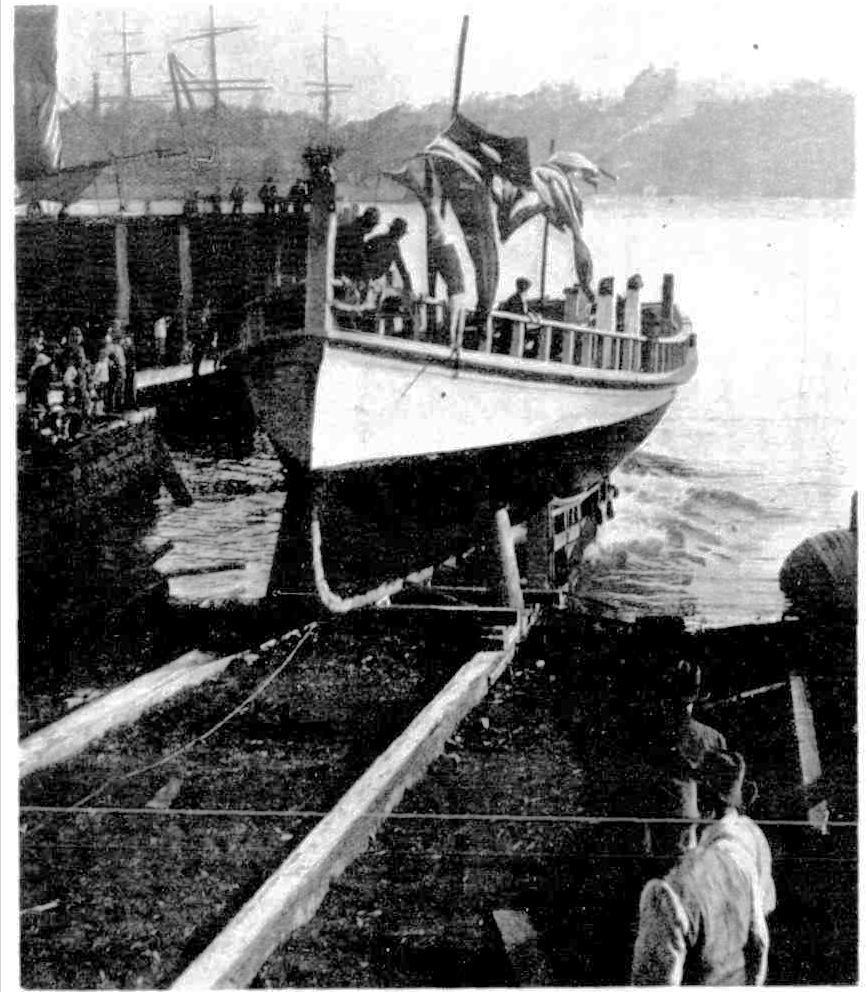
LAUNCH OF NEW STEAMER GREYHOUND II. Built for Allan and Hunter at Rowntree's Dock, Balmain.
Launch of a Steamer. (1902, June 14).The Sydney Mail and New South Wales Advertiser (NSW : 1871 - 1912), p. 1505. Retrieved from http://nla.gov.au/nla.news-article163819188
FISHING.
To-day. — A.F.A., schnapper trip to Coalcliff. July 5,— Burwood Club, competition, Parramatta River. Several parties that visited Cowan, Hawkesbury, and Woy Woy during the week obtained only very small catches, and their reports are of a gloomy character. This is attributed to the cold westerlies. Fish leave their haunts on the flats and shallows when the water becomes Intensely cold for the deeper channels.
The A.F.A. schnapper excursion In the Greyhound to-day for Coalcliff and Bellambi Reef filled well, Twenty-five members booked for the outing. Some fine hauls should be made if the weather proves propitious, which is usual for this time of year with the wind of the land. The Burwood Fishing Club have arranged a competition for the fifth proximo on the Parramatta River, for Mr. W. Harris' trophy. An open competition for the month of July ha» been promoted by Slick Simmons, of the Haymarket, on a liberal scale, open to all anglers, entrance free. First prize, a sliver-mounted pipe and fishing lines to the value of £3 3s; second prize, fishing tackle value £2 2s. The prizes are exhibited In the windows at the Haymarket, and the following conditions are to be observed:— Competitors may fish anywhere within a radius of 20 miles from Sydney. Only edible fish captured on rod or handline will count, and they must be obtained In a sportsmanship manner. Four days are allowed each competitor, viz., from Monday to Fridays, from 8.30 a.m. They must weigh result of catch up i» 5.30 p.m. on those days. On Saturdays the same applies, but from 1.30 to 9.30 p.m. Competitors weighing 1n the greatest number of edible fish la accordance with the provisions laid down by the new Fisheries Act shall be declared the winners. Messrs. Westenhagen and Thomson captured 10 tailer, weighing 20 lb., and on Thursday lost 40 of the same species were obtained at the Quay, with bait of boiled mutton. Johnson and party at Middle Harbour caught 90 black fish. J. Brown at Moore's wharf hauled 49 black fish ashore. The semi-final of the A.F.A. billiard tournament resulted in D. Hart and J. Spencer qualifying for the final, which Is to be played off to-morrow evening, at the rooms. Two schnapper weighing 20 lb. each, were captured at North Head on Thursday. Black fish, tailer, and mackerel, are reported to be biting well at Watson Bay, and off Garden Island.
Barracouta 3ft. long were caught in numbers off Cremorne, Neutral Bay, by several anglers on deep sea liners moored in the bay on Thursday and Friday last. It is seldom, if ever that they have been captured before in the harbour, although they have been occasionally caught off Coogee and elsewhere. These fish abound In Bass Straits, and there is no difficulty in catching them, as they take with avidity the "red rag" trailed in the water.
The Keira's schnapper party at Long Reef obtained 300 fish, varying from 9lb, down. The Woy Woy's party to Bird Island mustered 200 fish. Eastway's Long Reef excursion in the Greyhound totalled 120 schnapper kind. A private party on Thursday off Coalcliff in the Greyhound hauled on board 200 fish, the largest scaling 91b. A party from Woy Woy Journeyed in the steamer bearing same name to Catherine Hill Bay, and reported a large haul. The Neutral Bay Schnapper Club left last night for Wollongong, where they board the Xaiora, today, on a schnapper excursion to the Five Islands.
Next Wednesday Eastway's half-day trip to Long Reef in the Greyhound will take place. Fresh Prawns -in "Bytqik" are reliable; anglers very successful; big catches with "Bytqik;" in tins, 1s, 1s 9d, 2s 9d. FISHING. (1903, June 28). The Sunday Sun (Sydney, NSW : 1903 - 1910), p. 3. Retrieved from http://nla.gov.au/nla.news-article230032678
SUPPOSED WRECK. NEAR LONG REEF.
SYDNEY, Sunday.
A man named Boyle, who lives at Narrabeen, reported to the Manly police late this evening that he had sighted wreck-age about a mile off Long Reef, five miles north of Manly. He stated that through the glass the wreckage appeared to be the top of a mast, and the top of the derrick of a collier. They were sticking four or five feet out of the water. The police transmitted Boyle's message to the pilot station. It is probable that a boat will be sent to the scene of the supposed wreck at daylight. SUPPOSED WRECK. (1913, March 10).Newcastle Morning Herald and Miners' Advocate (NSW : 1876 - 1954), p. 6. Retrieved from http://nla.gov.au/nla.news-article136819527
ON THE- ROCKS NEAR NARRABEEN.
THE PADDLE-WHEEL STEAMER EUROKA ON SHORE AT LONG REEF, NEAR NARRABEEN. It will be seen that the vessel is flying a distress signal.
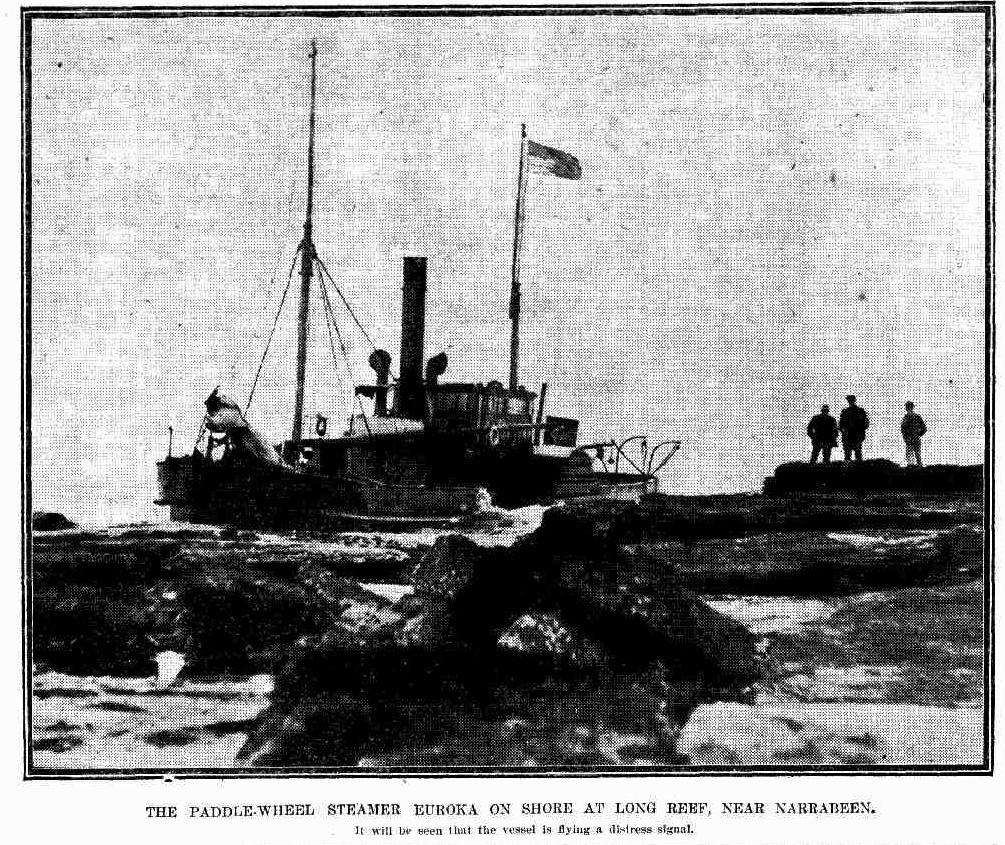
ON THE ROCKS NEAR NARRABEEN. (1913, October 21). The Daily Telegraph (Sydney, NSW : 1883 - 1923), p. 9. Retrieved from http://nla.gov.au/nla.news-article238903437
WRECK OF THE EUROKA ON LONG REEF.
THE SEAS WERE YESTERDAY BREAKING OVER THE ABANDONED VESSEL.
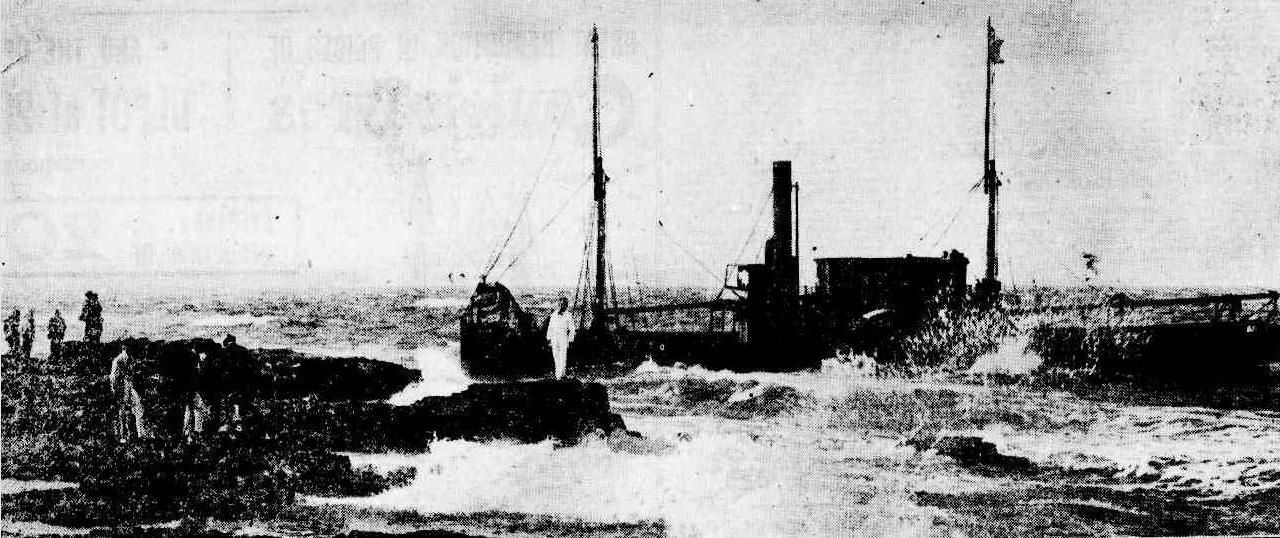
WRECK OF THE EUROKA ON LONG REEF. (1913, October 21). The Sydney Morning Herald (NSW : 1842 - 1954), p. 5. Retrieved from http://nla.gov.au/nla.news-article15459177
LONG REEF WRECK.
HUNDREDS OF PHOTOGRAPHERS.
Barely, has a wreck been so much photo-graphed as that of the Euroka at Long Reef. The little vessel is lying in such a fine position for the man with the camera that it is a clear invitation to the photographer. Last Sunday and Monday it appeared as if every second visitor carried a camera. One photograph was taken from sea on Sunday. A tug approached within about 50ft, of the wreck, and a splendid view of the vessel and the people on the reef must have been obtained. Several men in bathing costumes swam out to the stern of the Euroka and clambered aboard without difficulty, the sea being calm, but they did not find it so easy to land again on the rocks, and there were some barnacle-branded bodies showing after the feat.
The swimmers took a good deal of risk in diving into the broken and deep water, because it is the home of the: huge octopus and conger eels, and the deeper water often reveals huge and active sharks.
By the look of things the purchasers of the wreck have been proceeding in a rather leisurely fashion. No attempt to land the coal had been made up to yesterday, and it was reported locally that it was proposed, to transport it into a punt to be brought round from Sydney. LONG REEF WRECK. (1913, October 28).The Sun (Sydney, NSW : 1910 - 1954), p. 8 (FINAL EXTRA). Retrieved from http://nla.gov.au/nla.news-article229354387
CASUALTIES.
FISHERMAN DROWNED.
A fisherman, named Joseph Fino, from Collaroy Beach, met his death yesterday while out fishing. Fino went out with another fisherman, Charles Johnston, and when about four miles out the boat capsized. Johnston swam ashore, and reached land in an almost insensible condition. The Captain Cook went out, and recovered the boat, but found no trace of Fino. Johnston stated that the last he saw of him was when he was seated on the upturned boat. Fino was a native of Italy. CASUALTIES. FISHERMAN DROWNED. (1915, October 6). The Sydney Morning Herald (NSW : 1842 - 1954), p. 14. Retrieved from http://nla.gov.au/nla.news-article15617625
COLLAROY FATALITY.
Sir.— I have been requested by the Collaroy Beach Progress Association to bring under your notice the facts in reference to the attempted rescue of the unfortunate fisherman last Monday evening.
A resolution was carried at the Association meeting commending both junior and senior members of the Surf Club for their prompt and heroic attempt to rescue. Immediately the capsise took place a scratch crew of the junior members (lads about 16 years old) attempted to get the boat out, but the heavy seas were too much for them and the boys had to return, completely exhausted by the, effort.
When the senior members arrived home from work a second attempt was made, and just as the boat cleared the beach the Captain Cook rounded the points. We regret that our boys failed, but we are proud that they have in them the stuff that heroes-are made out of.
Collaroy Beach. — GEO. COHARNES. COLLAROY FATALITY. (1923, January 17). Evening News (Sydney, NSW : 1869 - 1931), p. 6. Retrieved from http://nla.gov.au/nla.news-article118811439
TUG SUNK OFF LONG REEF YESTERDAY.
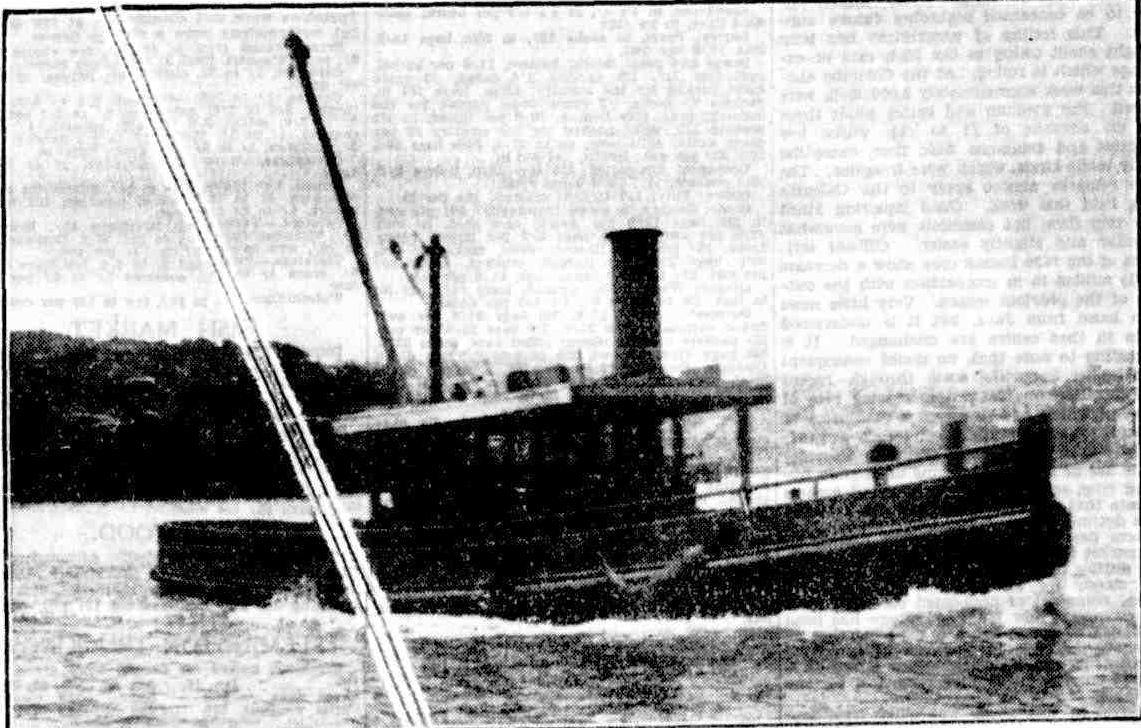
The steam tug Eclipse, which struck a submerged object in the dark, and sank almost immediately. The crew barely had time to take to their boat. TUG SUNK OFF LONG REEF YESTERDAY. (1931, January 17). The Sydney Morning Herald (NSW : 1842 - 1954), p. 16. Retrieved from http://nla.gov.au/nla.news-article16746576
FIRE THRILL
ON BLAZING LAUNCH DIVE TO SAFETY
LONG REEF SENSATION
A launch caught fire when the engine exploded about a mile and a half out at sea from Long Reef, between Collaroy and Dee Why shortly before three o clock this afternoon. The launch, which was about 30ft. long, was burnt to the water's edge, and it sank. The men tried to extinguish the flames with tins of water, but finding they could make no impression, they turned their attention to saving the nets, lines, and other property. The flames, however, spread rapidly, and they had to swim to their dinghy.
Fear of Drifting
Without oars, they were fearful of drifting out to sea. In the meantime the smoke arising from the burning launch was seen by Beach-Inspector Burke, of Dee Why. With Messrs. M. Moore, S. Moore, L. Moore and W. Orr, of the Doe Why Life Saving Club, he set out! to succor the men. A second boat in which were Billy Hughes and Percy Sargent, fisherman, was not far from the canal a third boat also joined in the rescue work.
Shark on Scene
While the rescue boats were nearing the scene, a shark appeared and cruised about for a while, but it disappeared when the craft closed in. One of those who first saw the blazing launch was Robert Lockley, of Stuart-street, Collaroy, who was at Long Reef. He immediately telephoned the Narrabeen police. Constable Huckins hastened to Dee Why on a motor cycle. FIRE THRILL (1931, March 24). The Sun (Sydney, NSW : 1910 - 1954), p. 9. Retrieved from http://nla.gov.au/nla.news-article224664990
LIFE LEAP
Launch Afire at Long Reef
6.30 a.m. THRILL
TWO Italian fishermen had to leap for life into the icy cold water when their fishing launch caught fire and sank near Long Reef, Collaroy, shortly after 6.30 a.m. to-day. Antonio Alae and Bob Macchla, from Woolloomooloo Bay, had Just reached Long Reef when the engine backfired and burst into flames. Despite the desperate attempts of the fishermen to extinguish the blaze, it spread rapidly and in a few minutes the launch was afire from end to end. The two men, realising that they could do nothing more, dived, fully clothed into the water just before the craft sank like a stone. For a quarter of an hour the men struggled in the freezing water before being rescued by another fisherman Antonio Macdia, who were returning to Sydney in another launch. They were taken to the Hornby lighthouse, where the keeper Mr. McFadyen, provided them with dry clothing. LIFE LEAP (1932, March 21). The Sun (Sydney, NSW : 1910 - 1954), p. 7 (CRICKET STUMPS). Retrieved from http://nla.gov.au/nla.news-article229892455
COLLAPSED AND DIED ON BEACH
George Baker 70 of Malcolm St.,Erskineville collapsed and died at Collaroy Beach yesterday. Police were Informed that Baker, a age pensioner, was camping in a tent at Fisherman s Bend, near Long Reef. COLLAPSED AND DIED ON BEACH (1937, November 13). The Labor Daily (Sydney, NSW : 1924 - 1938), p. 1. Retrieved from http://nla.gov.au/nla.news-article237763109
LAUNCH CREW SAVED BY COLLAROY SURF CLUB
SIX LIFESAVERS' GALLANT FEAT.
SYDNEY, May 19-Rowing more than 1000 yards in heavy-seas, whipped by a 60 /m.p.h. gale, members of the Collaroy Surf Club to-day risked their lives to rescue a small motor launch…owned by Harold Linn, of Randwick, and James Giilimore of Redfern in distress, off Long Reef. The 18ft. launch, in which they and four other men left Rose Bay on a fishing trip at 10.30 a.m. to-day, and when two miles off Curl Curl Beach, engine trouble' developed and, driven by heavy seas, the launch drifted rapidly northward.
.At 4.30 p.m. it was seen by residents of Collaroy to be less than a mile from shore, and heading toward the dangerous surf near North Collaroy. Six surf club members manned a surf boat, and after an exhausting and perilous struggle against wind and surf they managed to reach the launch.
A piece of anchor rope, the only gear in the launch not washed overboard, was thrown to the surf-boat, and pulling against a strong current for an hour and a quarter, the lifesavers towed the launch into Fisherman's Bay, but when it was almost reached the tow rope broke, and it was quickly dragged seaward by the undertow. One of the 'surf-boat crew dived overboard and swam-60 yards to reach more lines to the launch, and it was finally beached at 6.30 p.m LAUNCH CREW SAVED (1946, May 20).Cairns Post (Qld. : 1909 - 1954), p. 1. Retrieved from http://nla.gov.au/nla.news-article42495417
BATTERED LAUNCH DRIFTS ASHORE AT LONG REEF
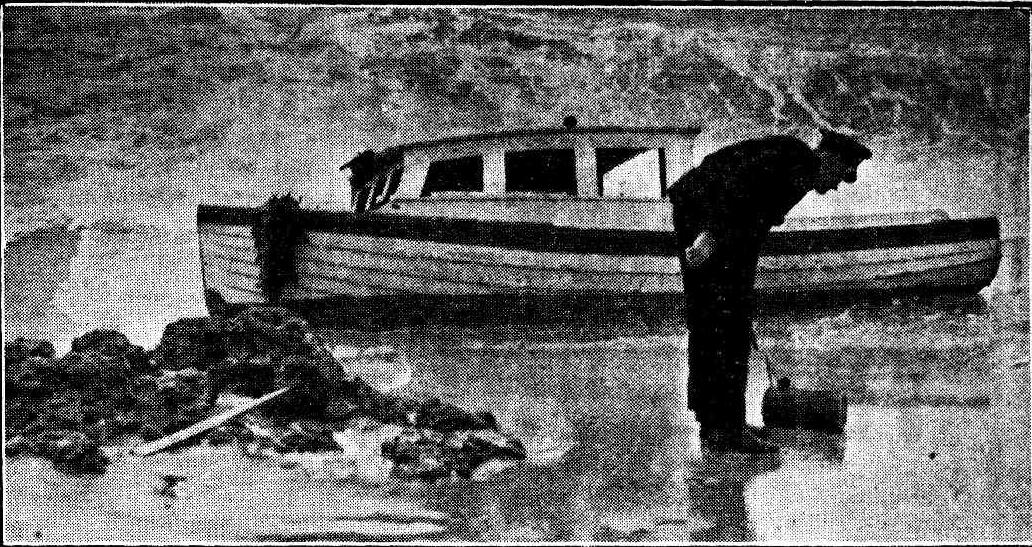
SURF-BEATEN launch where it drifted ashore near Long Reef yesterday. The launch capsized half a mile from the shore. A woman swam to the beach, but a man companion is missing.
Search For Seaman Missing After Capsize
Police and civilians searched the beach and rocks near Long Reef until late last night for a man who has been missing since a launch capsized early yesterday afternoon. The missing man is Ivan Archer Plummer, 23, merchant seaman, of Melbourne. The only other occupant of the launch, Miss Lavendar Joan Fosbery, 27, Macleay Street, Potts Point, swam and drifted on a plank for half a mile through heavy seas before reaching the shore.
About noon yesterday a man rang Narrabeen police and reported that a launch, without any occupants, was drifting ashore on the Dee Why side of Long Reef golf course. Senior-Constable Adams and Constable Adrian went to investigate. As they approached the beach they saw Miss Fosbery struggling from the water. Planned Harbor Trip Constable Adams said Miss Fosbery told the police she and Plummer had hired the launch from Messenger's Boat Shed, Double Bay, about 3 p.m. on Thursday, to go for a trip on the Harbor. -Near the Sydney Heads the engine failed, and the launch drifted rapidly out to sea. There was no food or water on the launch. When it got dark Miss Fosbery and Mr. Plummer attempted to attract attention by lighting flares made of twisted newspapers. They dropped anchor and spent the night at sea in the cabin.
At dawn the launch was off Manly. Miss Fosbery had a watch, and calculated they would drift on to the shore at Long Reef by midday. "Engine Still Dead" "As the launch drifted on to Long Reef, Plummer told me he was a good swimmer and I told him I could swim," Miss Fosbery told police-"The launch was flooded and the engine was still dead. "The launch capsized when the first big wave hit it about half a mile out. "I grabbed a plank and started for shore. I saw Ivan in the water. "He was about 40 yards behind me. "He had his overcoat on when we capsized. "He yelled out something but I could not hear. "I think he was telling me to keep on going. "I did not see him again." Police took Miss Fosbery to friends at Collaroy, where she was given a meal and then went to bed. The launch drifted ashore at the north end of Dee Why Beach. BATTERED LAUNCH DRIFTS ASHORE AT LONG REEF (1946, October 19). The Daily Telegraph (Sydney, NSW : 1931 - 1954), p. 5. Retrieved from http://nla.gov.au/nla.news-article248405075
Geoffrey Keith Townshend
b. 1888 died September 14th, 1969 at Dee WhyAlso known as G. K. Townshend
Mr. Townshend was a mid 20th century Auckland and Sydney cartoonist, watercolourist, art teacher and heraldic engraver.
G K Townshend was born in Auckland. After studying at Elam Art School and working in Auckland as a heraldic engraver he came to Sydney in 1910 [1911 acc. AGNSW records]. He continued his 'bread-and-butter’ job while studying art with Dattilo Rubbo in c.1912. He contributed to the Bulletin from 1911 as a result of being introduced to Percy Lindsay, who also influenced his style.
In 1915 he enlisted in the AIF and spent three years on active service in France, sending back sketches from the front and contributing to Aussie. He served as a Gunner 1 FAB [Field Artillery Brigade] - 12 to 16 Reinforcements (November 1915 - April 1916).
He continued to draw for Aussie , e.g. How She Got the Notion to Shorten Her Skirts, 15 May, 1929, p.35. Most of his Bulletin cartoons seem to be of the 1930s and wartime ’40s, done when he was a part-time teacher at East Sydney Technical College. Examples include: “You’re still too far from the kerb, Henry” [couple parking a car on a very wide empty country street] 1940; '– “Where’d you get those decorations?” – “Anthony Horderns’, sir”’ 1940; “I want to see someone about changing my son’s number – 131313”, 1942; “Now, lads, I want you to feel as if you was in your own 'ome. Look on me as your mother” (officer to raw recruits) 1942; “Just for a start, Mabel, I’ll clear four or five acres for wheat” (newchum farmer in bush) 1943; “Mister, may I have tomorrow off? Me grandmother’s coming home on leave”, 8 November 1944.
He also illustrated stories run in the Sydney Mail.
Townshend also painted watercolours. He was vice-president of both the RAS(NSW) and the Australian Watercolour Institute. According to the Bulletin, he spent 'a lot of time in rural parts getting subjects for his water-colour pictures’, although he lived in Dee Why and for many years was on the teaching staff of ESTC. McCulloch states that his landscapes were influenced by John Singer Sargent’s watercolours and by the work of Winslow Homer.
He was married to Dorothy Reynolds, a potter and daughter of Sarah Paterson, was a grand-daughter of Colonel William Paterson, who was twice acting Governor of New South Wales and Walter Reynolds, well known in Sydney newspaper circles during his time and chief clerk and assistant secretary of the Victorian railways, and secretary for the trustees who organised the Melbourne exhibition of 1880.
The Bulletin (22 February 1939, 18) stated that Townshend was in his mid-forties and his father was heir-presumptive (after an elder brother) to the Marquess of Townshend, but since the latter was then a healthy twenty-two 'G.K. Townshend’s chances of succession are pretty remote’. He was an AGNSW trustee in 1959-61.
He died at Dee Why on 14 September 1969.
Mr. Townshend’s art works of local places were numerous - some samples and a few extras about this local Artist:
Service number 11415
Rank Gunner
Roll title 1 FAB [Field Artillery Brigade] - 12 to 16 Reinforcements (November 1915 - April 1916)
Conflict/Operation First World War, 1914-1918
Date of Embarkation 15 January 1916
Place of embarkation Sydney
Ship Embarked On RMS Osterley
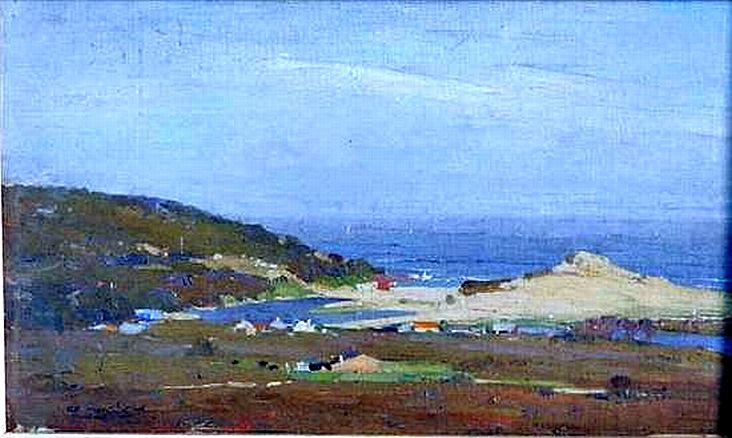
Townshend, Geoffrey Keith, Narrabeen 1950, Courtesy of Theodore Bruce Auctions © Geoffrey Keith Townshend or assignee
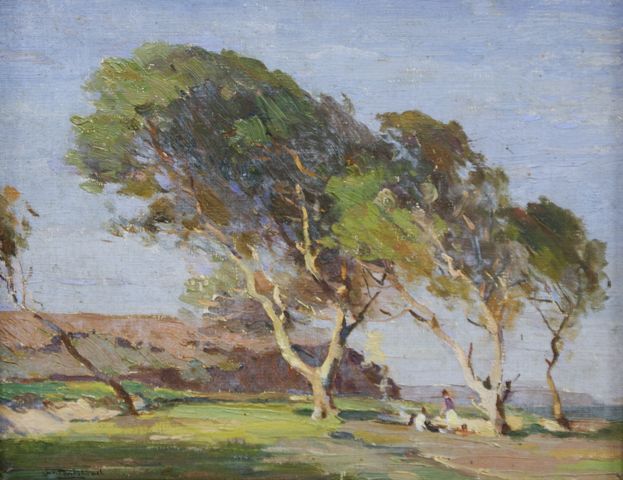
Townshend, Geoffrey Keith, Palm Beach, Courtesy of Bay East Auctions © Geoffrey Keith Townshend or assignee
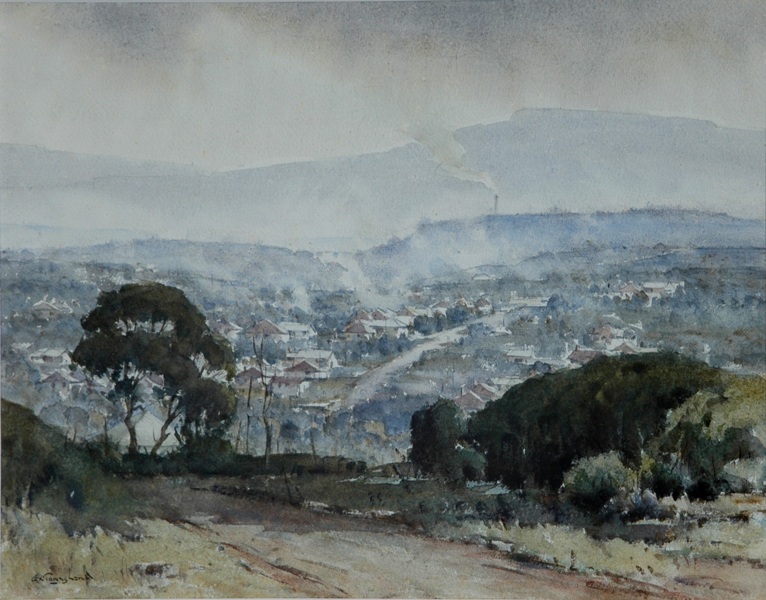
Townshend, Geoffrey Keith, 'Smoke Haze,' Dee Why, NSW', Courtesy of Davidson Auctions © Geoffrey Keith Townshend or assignee Watercolour, 33 x 43 cm
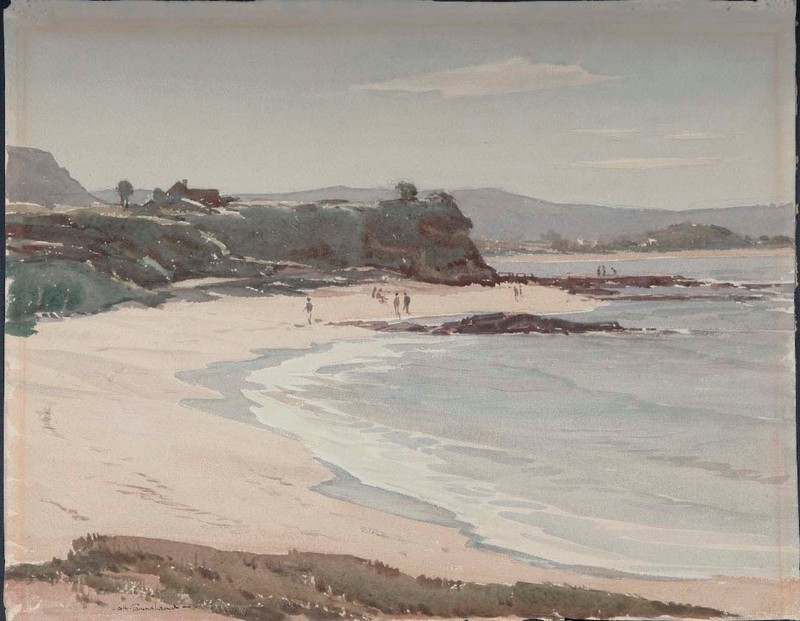
Townshend, Geoffrey Keith, 'Looking Towards Narrabeen from Collaroy'
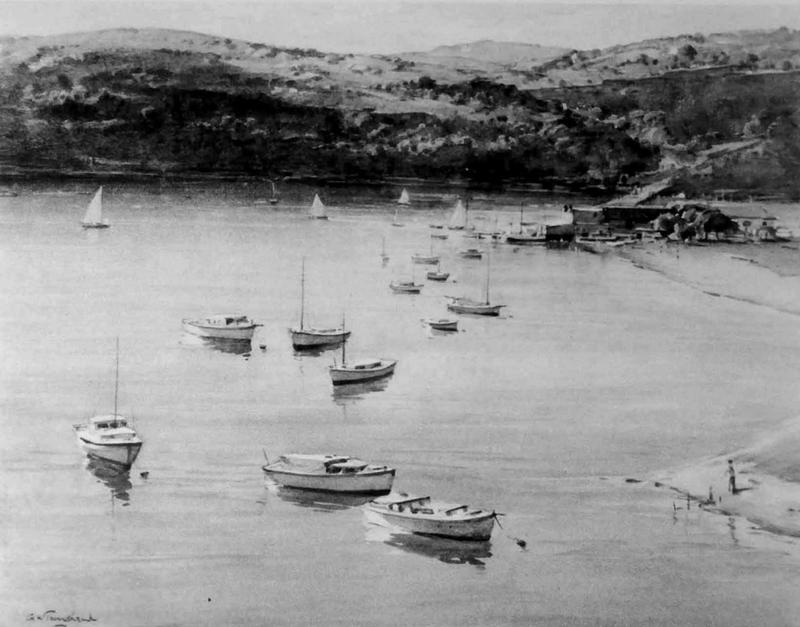
Townshend, Geoffrey Keith, ''The Spit' NSW'

Townshend, Geoffrey Keith, "Warriewood"
Marriage - NSW BDM's Records
17527/1915 TOWNSHEND GEOFFREY K REYNOLDS DOROTHY T M ST LEONARDS
DEATH OF MR. WALTER REYNOLDS
The remains of the late Mr. Walter Reynolds were interred at Gore Hill Cemetery yesterday. The chief mourners were his widow Mrs. Sarah Reynolds, his son, Captain Chester Reynolds, who has only just returned from active service; and his only daughter, Mrs. G. K. Townshend. Another son, Corporal Leigh Reynolds, and a son-in-law, Sergeant Townshend, are at present on their way home to Australia. The late Mr. Reynolds, who was well known in Sydney newspaper circles, was at one time chief clerk In the Victorian Railways Department in the days of the late Mr. Speight, the Chief Commissioner. The service at the graveside was conducted by the Rev. W. Pearce. DEATH OF MR. WALTER REYNOLDS (1919, May 15). The Sydney Morning Herald (NSW : 1842 - 1954), p. 5. Retrieved from http://nla.gov.au/nla.news-article15838675
Mrs. W. Reynolds
Mrs. Walter Reynolds, of Delmar Parade, Dee Why, New South Wales, who died at the residence of her daughter (Mrs. G. K. Townshend) yesterday, was the widow of the late Mr. Walter Reynolds, once chief clerk and assistant secretary of the Victorian railways, and secretary for the trustees who organised the Melbourne exhibition of 1880.
Mrs. Reynolds, whose maiden name was Sarah Paterson, was a grand-daughter of Colonel William Paterson, who was twice acting Governor of New South Wales. Mrs. Reynolds, who was born in Melbourne in 1855, spent much of her childhood in Richmond (Victoria), and had as a fellow member of singing parties a girl named Nellie Mitchell, later to become Dame Nellie Melba. Mrs. Reynolds is survived by three children—Major Chester Reynolds, editor of the "Queensland Government Mining Journal," Mr. Leigh Gundry Reynolds, of Dee Why (New South Wales), Mrs. G. K. Townshend, wife of the "Bulletin" artist, and a number of grandchildren. Mrs. W. Reynolds (1934, March 3). The Courier-Mail (Brisbane, Qld. : 1933 - 1954), p. 24. Retrieved from http://nla.gov.au/nla.news-article1176254
VICTORIAN WOMAN'S DEATH.
Passing of Mrs. W. Reynolds.
A link with early Australian history was broken on Friday last, when Mrs. Walter Reynolds, of Delmar-parade, Dee Why, near Manly, N.S.W., passed away at the residence of her daughter (Mrs. G. K. Townshend). Mrs. Reynolds was the relict or the late Mr. Walter Reynolds, one time chief clerk and assistant secretary of Victorian railways, in the regime of the late Mr. Richard Speight. Prior to that the late Mr. Reynolds was the secretary for the trustees who organised and controlled the Melbourne Exhibition of 1880 — the great exposition which marked the jubilee of Melbourne's foundation.
The late Mrs. Reynolds, whose maiden name was Sarah Paterson, was a granddaughter of Colonel William Paterson, who was twice acting Governor of Australia, and the man who sent home to England Governor William Bligh and Major Johnston in 1809 to finish in London their argument so dramatically begun in Sydney. Colonel Paterson's widow was given a grant of land in Tasmania, and some of his family became Australians. Mrs. Reynolds's father was Paterson’s youngest son, Edward, who became a cartage contractor between Melbourne and the Ballarat gold fields in the 50's. Mrs. Reynolds spent much of her childhood in Richmond (Vic.), and, being musical, had as a fellow member of singing parties a girl named Nellie Mitchell, later to become the world-famous Dame Nellie Melba. It is interesting to recall the late Mrs. Reynolds's associations with the past, inasmuch as her grandfather's name is associated with many place names in Australia. He founded Launceston, in Tasmania, the William and Paterson Rivers, and the town of Paterson, in the Maitland district, were named after him and Elizabeth Bay, Elizabeth-street, Sydney, and Mount Elizabeth, near Newcastle, were named after his wife, Elizabeth Paterson. Colonel Paterson was chosen at the behest of Sir William Banks, the great eighteenth century naturalist, to go to New South Wales in 1793, and during his sojourn in Australia forwarded many valuable botanical specimens t o London. For his work in this direction he was elected a Fellow of the Royal Society.
The late Mrs. Reynolds, who was born In Melbourne in 1855, leaves three children to mourn her loss— Major Chester Reynolds, editor of the Queensland Government "Mining Journal"; Mr. Leigh Gundry Reynolds, of Dee Why, N.S.W Mrs. a K. Townshend, wife of the well-known "Bulletin" artist of that name and also a number .of grandchildren. VICTORIAN WOMAN'S DEATH. (1934, March 6). The Age (Melbourne, Vic. : 1854 - 1954), p. 11. Retrieved from http://nla.gov.au/nla.news-article203830145
"BULLETIN" ORIGINALS
Interesting Exhibition.
The exhibition of original drawings by "Bulletin" artists, which will be opened to-day at David Jones's George-street Store, is an interesting one. It covers every phase of the particular style of drawing and cartoon favoured by the Journal. Most interesting of the exhibits are the caricatures of film stars by Frith. This capable worker in black and white is well represented by such studies as Charles Laughton, Fredric March, and Sir Cedric Hardwicke.
Finey, who recently held an exhibition, has several drawings on the walls which are not up to his usual standard. Syd. Miller is represented by animal cartoons, a sphere in which he is very successful. Percy Lindsay, Souter, Such, Townshend, Mattinson, and many others have illustrations of jokes on the wall.
It might perhaps have been advisable to relieve the monotony of black and white with some of the watercolours from the Macleod Gallery. This would increase the interest in the exhibition. The exhibition will be opened this after noon at 3 p.m. by Mr. Justice Evatt.
"BULLETIN" ORIGINALS (1937, February 9). The Sydney Morning Herald (NSW : 1842 - 1954), p. 9. Retrieved from http://nla.gov.au/nla.news-article17298778
OPENED EXHIBITION OF PICTURES.
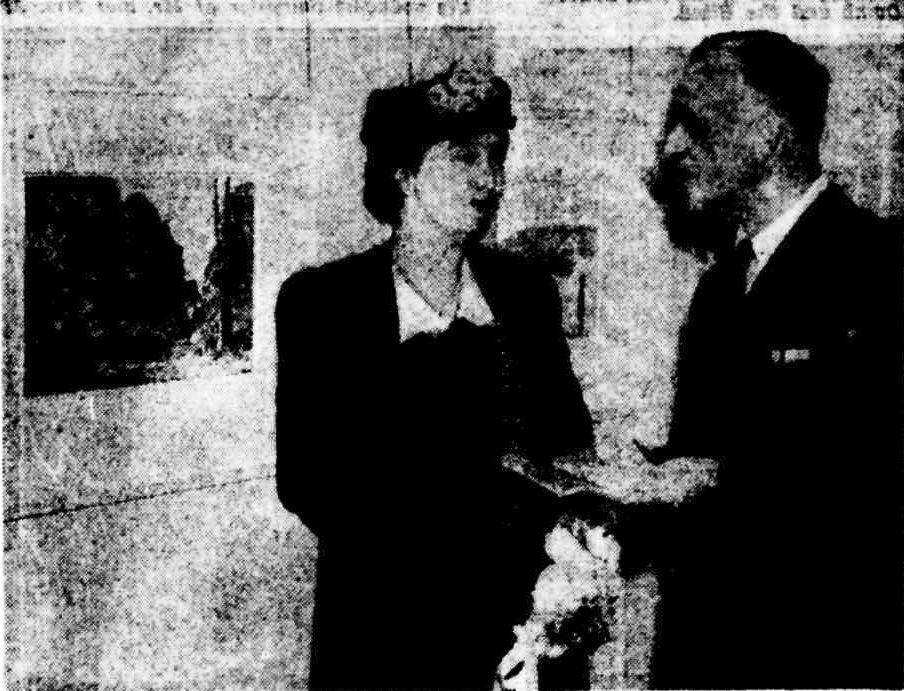
MRS RODNEY DANGAR photographed with MR G K TOWNSHEND at the Grosvenor Galleries inhere she opened his exhibition of paintings yesterday afternoon The exhibition will remain open until March 20. OPENED EXHIBITION OF PICTURES. (1940, March 7). The Sydney Morning Herald (NSW : 1842 - 1954), p. 18. Retrieved from http://nla.gov.au/nla.news-article17661196
Children’s Queries On Art Amazed Him
Visiting artist accompanying the travelling art exhibition, Geoffrey Townshend, said on Tuesday night he had been dumbfounded at the questions asked here by schoolchildren who bad seen the paintings. Mr. Townshend was commenting on the appreciation and Interest shown by the children, their quest for knowledge and their eagerness to understand anything that perplexed them in the paintings. 'The children got right down to fundamentals as far as picture making Is concerned,' he said.
Mr. Townshend has been lecturing on the exhibition to the children and the public every day. He is a 'down to earth' artist who is ready to admit that, like the public, he also is puzzled by some of the paintings. His lectures, touched with a rare humour, have been much appreciated. On Tuesday night he answered questions from the public about the pictures in the exhibition. He explained that they were all by renowned British painters, who were nearly all -degree .men. 'We don't expect you to like all these pictures, I don't myself,' he said. 'Although some of them do not appeal to me we can all appreciate the talent and knowledge that is behind them. 'Those you do not like at first you may come to like after a long study of them,' he said.' 'The paintings in this exhibition are in the permanent collection of the National Art Gallery. They are all paintings of quality and merit. 'Knowing about art is difficult and confusing. There is nothing to be ashamed of to say that you do not understand a picture. 'I have just seen an exhibition of modern paintings In Sydney that would just about knock you over. A lot of them would not make sense to you. 'But it is the variety in this exhibition you see here that makes are so interesting.'
ABSTRACT WORRYING.
Mr. Townshend said that the abstract painting (No. 6 in the exhibition) by John Tunnard seemed to worry everyone. 'You try to identify it, you are looking for something that is not there. Actually it is only a design and colour nicely arranged. It is a combination of nice shapes with colouring.' Mr. Townshend also said the small still life painting (No. 22) by Peploe did not appeal to a lot of people. They seemed to think there was something unfinished about it. Personally, he thought It was a lovely picture. 'You must all agree It is a very nice combination of colours which go to make a nice design,' he said. Mr. Townshend said that the modern painters had broken, away from the detail of the old painters. This was especially so since the Invention of the camera and photography. One of the most striking paintings in the exhibition is a still life called 'Careening' 'shown a boat called careened on a quayside. It is outstanding for the brilliant colours, particularly the blues, and for the detailed outline with which every single object has been painted. Mr. Townshend said this painting illustrated the modern idea of extreme detail in painting. He said he thought the brilliant colouring may have been obtained with lacquer. He said that in this type of painting the textures or the surface of everything had been stretched. Most of the children who saw the exhibition were impressed by this painting and voted it the best. Another painting which was much admired was James Bateman's 'Woodland With Cattle.' Mr. Townshend said it was a fantasy which obtained Its ' effect because the colours were so harmonious, particularly the greens, and it had a good compositional sense. A different style of painting which caused comment was 'The Pier, Walberswick,' by R. O. Dunlop, which Mr. Townshend said had probably been done with a pallete knife. Two paintings which seemed to draw adverse criticism from the gathering were 'The Old Bedford' and 'Trouble in Paradise Row.'
Many people asked Mr. Townshend what merit there was in 'The Old Bedford.' He admitted he did not really know himself. He said 'Trouble in Paradise Row,' a very dark coloured painting — almost a black and white — showed good characterisation, especially of the slum people it depicted. In his lecture Mr. Townshend also explained how some painters schemed their painting in with the frame el. her by careful selection or by actually painting the frame themselves. The very natural study of horses In Sir Alfred Munnings' painting, 'Shade,' was admired by many country people. 1 A painting which Impressed almost everyone who saw the exhibition was Sir George Clausen's 'An Interior,' a masterpiece in the presentation of light and colour. Everyone who saw the exhibition was handed a slip of paper and asked to name the three best paintings. A large number of people included 'An Interior' in their choice. Sessions have been held daily for '.own and district schoolchildren who have been brought by their teachers to see the exhibition.
BIOGRAPHICAL NOTE.
Mr. Geoffrey Keith Townshend is a New Zealander who has made his home in Australia. He was born in Auckland in 1888 and studied under Louis Steele. He arrived in Australia in 1911, studied under Norman Carter and Dattilo Rubbo at the Royal Art Society's school. He was employed as an engraver in Sydney.
In 1915 he enlisted in the first A.I.F. and went overseas. Returning to Australia he took up freelance and black and white work, illustrations and joke blocks and spent his spare time painting landscape in water colour. He has continuously and exclusively used this medium up to the present time. In 1935 he joined the staff of the East Sydney Technical College as a fulltime teacher of art. He retired in 1948 as head teacher of the intermediate section of the art course.
Mr. Townshend is represented in a number of National and public galleries and is a Fellow of the Royal Art Society of N.S.W. and a member and vice-president of the Australian Water Colour Institute. He has consistently exhibited at the annual exhibition of both these societies. Mr. Townshend has six works in the possession of the National Art Gallery of N.S.W. A few years ago Mr. Townshend visited Gloucester where he spent a caravan holiday painting under the Bucketts. Children's Queries On Art Amazed Him (1953, May 22). The Gloucester Advocate (NSW : 1905 - 1954), p. 4. Retrieved from http://nla.gov.au/nla.news-article160383509
Acting High Commissioner for Pakistan MR. AHMED ALI and MRS. ALI with artist G. K. TOWNSHEND, whose exhibition of paintings was opened by Mr. Ali at the Grosvenor Galleries yesterday.
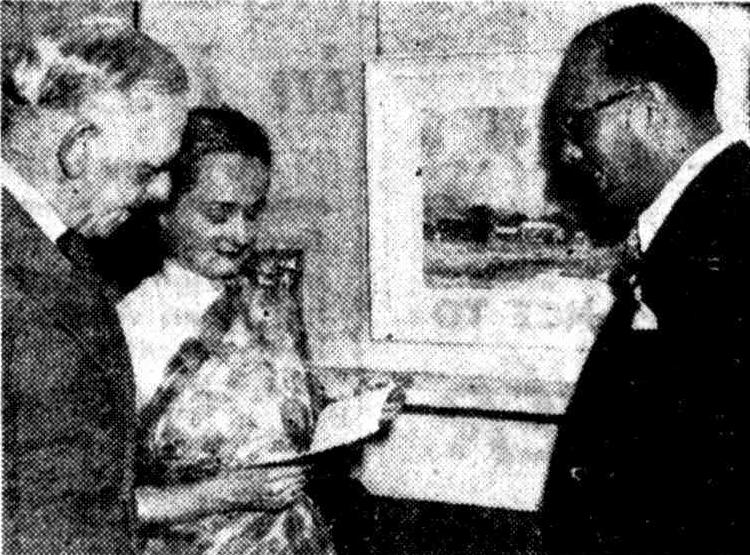
At an art exhibition (1952, October 29).The Sun (Sydney, NSW : 1910 - 1954), p. 32 (LATE FINAL EXTRA). Retrieved from http://nla.gov.au/nla.news-article230998103
Not Mr. Townshend - but very nice, even in newspaper form - imagine the original;
MORNING AT DEE WHY
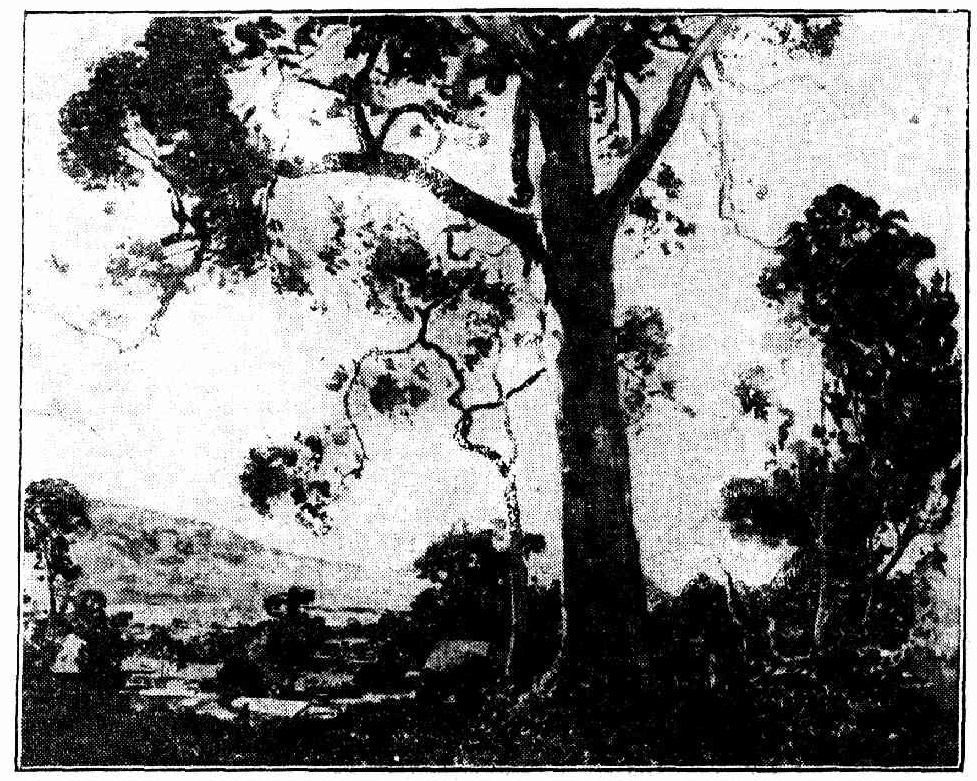
A picture from the exhibition of water colors by Mr. J. Muir Auld, which is to be opened at Farmer's on Monday next.
MORNING AT DEE WHY (1925, May 16). The Daily Telegraph (Sydney, NSW : 1883 - 1930), p. 1. Retrieved August 8, 2018, from http://nla.gov.au/nla.news-article245230610
LONG REEF— COLLAROY
(Contributed).
If you wish to see the beauty
Of a morning by the sea,
Beauty that has no excelling
In its wondrous witchery.
See the sun rise in its glory
Filling all your soul with joy,
Over stately, radiant Long Reef,
Long Reef at Collaroy.
In autumn, when dawn's silver
mists
Are floating out of sight,
And the birds wild clamor, shrilly
Once more bids good-bye to night.
Then the beauty that will gladden you
Is there "without alloy,
O'er ethereal looking Long Reef,
Long Reef at Collaroy.
O, bold headland gazing eastward,
Watching there to greet the sun.
And the ships that come to Sydney,
Do you know them — everyone?
Do you know the mystic language
That the crooning waves employ
As they break below your green crest
Long Reef at Collaroy.
I have gazed upon your beauty
At sunrise, and at noon,
Seen your glory in midsummer,
And in wistful, rain-kissed June,
And was filled with hopeful longing
That for years 'twould be my joy,
- To live o'erlooking Long Reef,
Long Reef at Coolaroy.
LONG REEF---COLLAROY (1940, March 14). Murrumburrah Signal and County of Harden Advocate (NSW : 1881 - 1947), p. 3. Retrieved from http://nla.gov.au/nla.news-article214489973
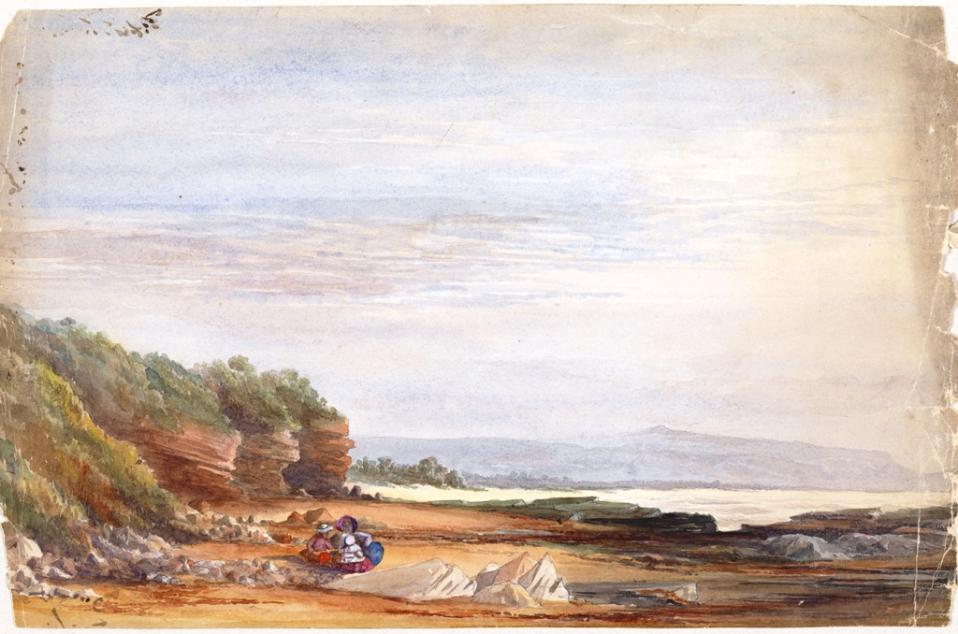
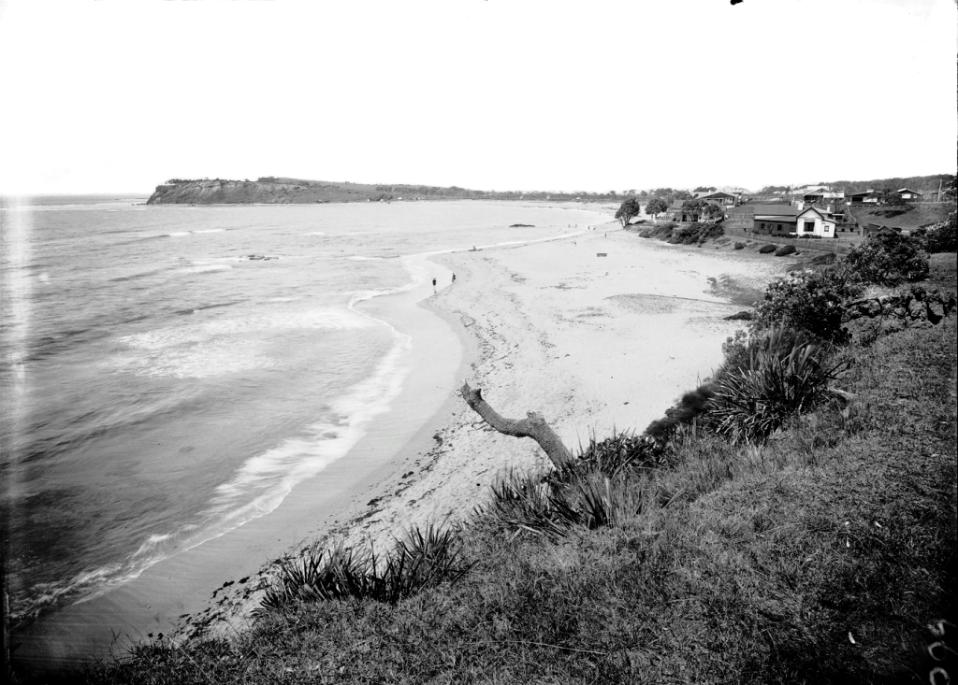
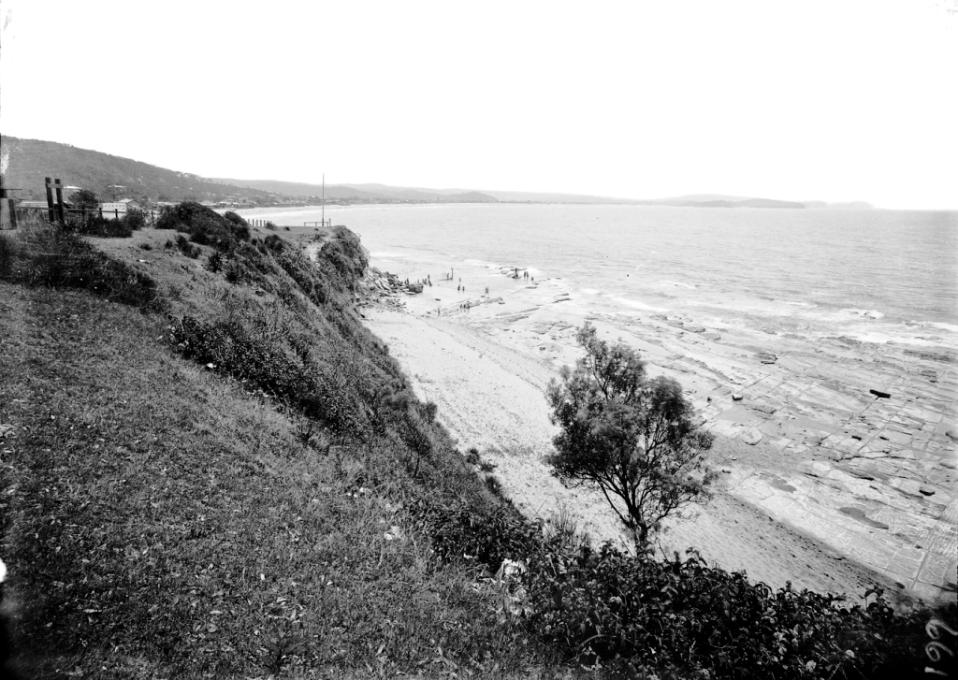
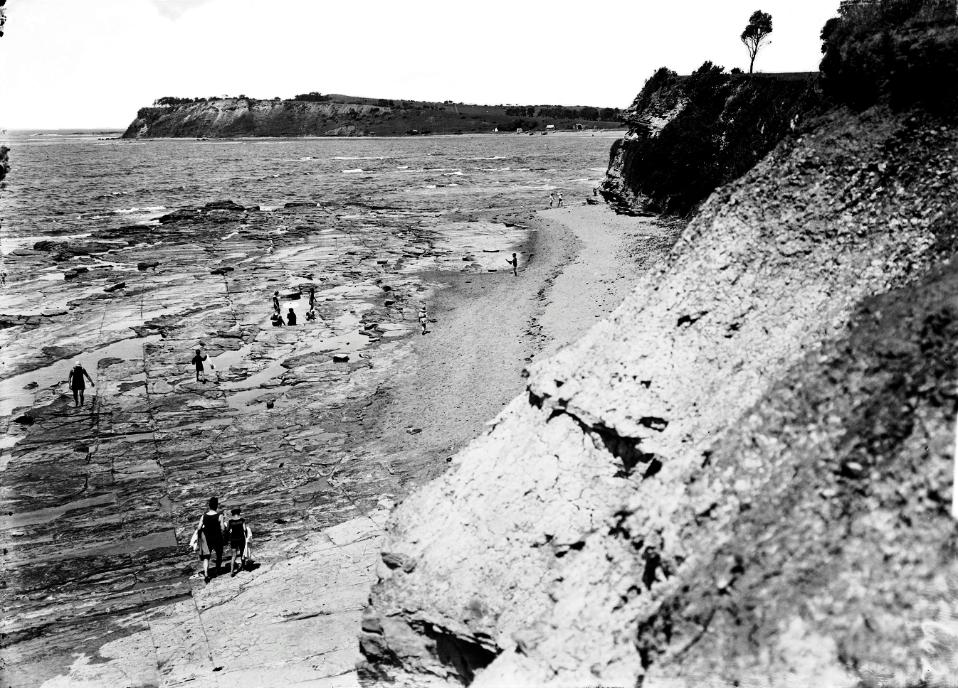
%20of%20Collaroy%20photographed%20by%20Arthur%20Ernest%20Foster%20a6415006h.jpg?timestamp=1535001262083)
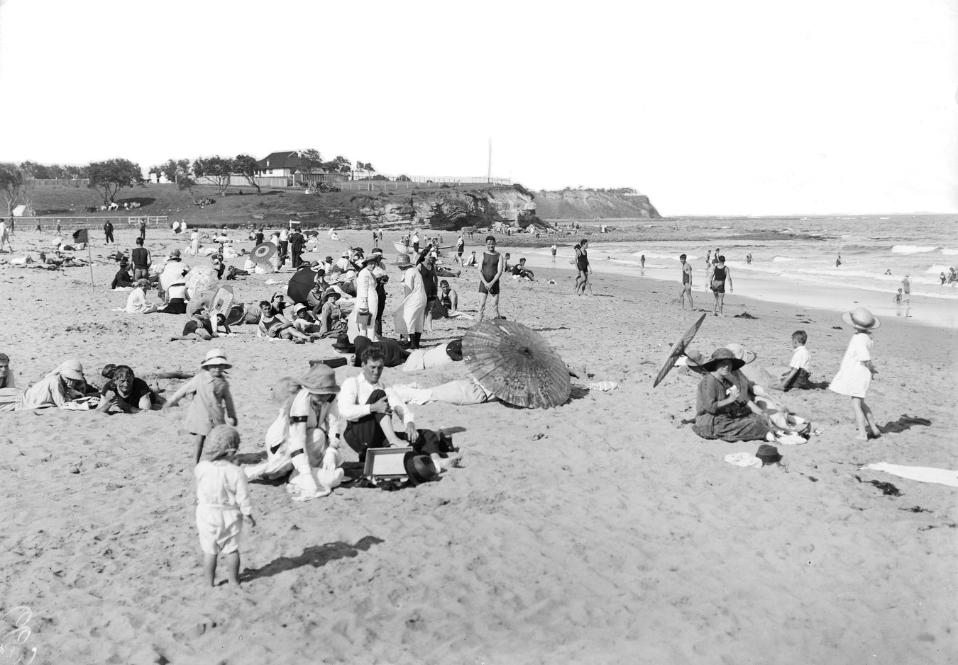
Extras
About ten days ago, the Sophia Maria, Hawkesbury boat, between Sydney and Hawkesbuy, had taken a small boat in tow, belonging to J. Elliott, who was then fishing ; the violence of the weather was such as to have rendered him hopeless, had not the Sophia Maria luckily offered him assistance. He remained in his little boat astern---the weather grew more tempestuous, and at length by the violence of the storm, his tow-line snapped. All attempts to render him further assistance proved ineffectual,he was given up for lost,---but we since learn, that he arrived safe at Hawkesbury, under the protection of an unseen Power !
A ROCK (1803, March 12). The Sydney Gazette and New South Wales Advertiser (NSW : 1803 - 1842), p. 1. Retrieved from http://nla.gov.au/nla.news-article625453
THE NIMROD FISHING CLUB.
The opening fishing excursion of the year of the members of the Nimrod Club took place on Saturday last, and proved very successful in point of attendance and the quality of the sport, although as to the latter the first two or three hours' fishing was disappointing. Members and visitors to the number of about forty sat down at half -past 7 a.m. to breakfast at Gannon's Exchange Hotel, and after this had been satisfactorily attended to, the party proceeded to Circular Quay, where the Mystery, Captain Henry Pettit, was waiting with steam up, ready for a start. A few minutes' grace was given to the laggards, and shortly after 8 o'clock the steamer proceeded down the harbour, the excursionists passing the time in laying in a supply of bait (a quantity of which had been^ provided), and m stretching and otherwise arranging the lines. The order was given to go North, and as the Mystery steamed through the Heads those who were not well seasoned by previous excursions became somewhat anxious as to the chances of getting through the day without the unpleasant experiences of sea-sickness. Only one or two succumbed, however, as there was a light northeaster, with a comparatively smooth sea; and when the first trial was made, wide off Long Reef, the pitching and rolling of the little vessel were forgotten in the anticipated sport. At this spot the party had very little luck, and Narrabeen, in shore and out, was tried with the same result, only a few schnapper being secured. The outer ground off Long Reef was also tried without much success, but upon anchoring at the inshore ground the fish were struck, and for a couple of hours the lines were kept well at work. A large number of schnappers and tragglin were secured, besides a fine jewfish and shark, the latter coming in for bait at a time when the supplies threatened to run out. Occasionally a big fish got fast, and the process of 'playing, although unsuccessful, caused a good deal of excitement, and not a little amusement. Prizes in money sweeps were given to those who caught the first, second, and third fish; and a line, presented by Mr. Eastway, was secured by a member of the Press, who managed to bring on board the largest schnapper of the day.
At half-past 5 o'clock the anchor was weighed, and, while the steamer proceeded on the return home, all hands were requested to go on the bridge, where a silver tea service was presented to Captain Pettit, on behalf of the Nimrod Club. The service bore the following inscription : —
' Presented to Captain Henry Pettit, of the steamer Mystery, by the members of the Nimrod Club, Sydney, January 8th, 1876. E. K. 'Wolstenhome, secretary; J. J. Yeend, treasurer.'
Mr. Lord, in making the presentation, said that, two or three years ago, about half a dozen gentlemen, who considered that the sports of the city were absorbed altogether by cricket, horse-racing, and other means of recreation, thought it would be a very desirable thing if these sports could be diversified by starting an amusement something like what they had had that day. Their president, Mr. Wilshire, and one or two other gentlemen inaugurated the Nimrod Club, and for the first year and a half of its existence it went on admirably, but during the second year, in consequence .if the amount of time he had to devote to his official duties, Mr. Wilshire could not give that attention to the club whim, he desired, and it fell back. During the last twelve months, however, it had been looked after by Mr. Yeend, who had resuscitated it until it had approached the success which they had all witnessed. (Hear, hear.) Much was due to the industry and zeal of Mr. Yeend, but they also knew that none of these excursions could become a success without the hearty co-operation of the Captain. (Hear, hear.) They might all be struggling and working hard to find out suitable places, but they had also had the advantage of Captain Pettit's zeal, industry, and experience in finding the places where the fish could be secured. (Hear, hear.) The courteous and friendly way in which he had always discharged these duties had been warmly recognised by the club, who thought that the only way they could mark their appreciation of such kindly offices was by the presentation to Captain Pettit of a testimonial. He therefore, on behalf of the club, now presented to him the tea service. (Cheers.) The recipient of the testimonial briefly returned thanks, and Mr. Lord's health was also proposed, and drunk with the usual honours. Similar compliments were paid to Mr. Wolstenhome (secretary), and Mr. Yeend (treasurer) — the latter, in expressing his acknowledgments, giving an encouraging account of the financial position of the club. 'Success to the Nimrod Club,' and other toasts, were also given and suitably responded to. By this time the Mystery had rounded North Head, and in less than an hour after the party landed at Circular Quay, having thoroughly enjoyed the trip. Leaving out leather-jackets— the bete noir of all fishermen — the total catch was about 270, of which the majority were schnapper and squire.
THE NIMROD FISHING CLUB. (1876, January 15). The Sydney Mail and New South Wales Advertiser (NSW : 1871 - 1912), p. 87. Retrieved from http://nla.gov.au/nla.news-article162650697
Nimrod Fishing Club.
The annual meeting of the above club was held on the 28th ult., at Eastway's Hotel. King-street, Mr. J. Craig, in the chair. The report and balance-sheet were read by the hon. treasurer, and adopted unanimously. The following officers were then elected: — President, Mr. J. Starkey; vice-president, Mr. Geo. R. Eastway, sen. ; hon. treasurer, Mr. W.J. Clarke; secretary, Mr. G. R. Eastway, jun. ; committee, Messrs. Huenerbein, W. Sharman, and W, Taylor. The subscription to the club was fixed at £4 4s. per annum, and the number of members limited to 50. Thirty-seven members present were elected, and the committee were empowered to elect the remaining number by ballot.
Nimrod Fishing Club. (1883, October 6). The Sydney Mail and New South Wales Advertiser (NSW : 1871 - 1912), p. 653. Retrieved from http://nla.gov.au/nla.news-article162025037
Our Fishermen.
(See illustration on page 26.)
As we have neither the mackerel nor the herring of the Atlantic in these warm southern seas, our fishermen who drag the beaches and shoals with nets, and fish with the line, lead quite a different life from those of the old country.
Here, too, we have neither the bloater nor the cod, Hence that embodiment of the rustic art in naval architecture, the fishing smack, has no place with us but, instead, we find the trim open centre-boarder, with its brown tanned sails, and the long net paid down in the stern.
Likewise, we have no fishing villages and, indeed, it is not easy to say where many of our fishermen live, or how, for they are widely scattered over nearly a thousand miles of coast. Many are to be found in the seacoast towns living among the rural people, and hardly to be distinguished from them. Some are to be found in every bay or estuary where there are sandy beaches; and not seldom their lonely habitations may be met with hidden away in some quiet cove. These dwellings all seem to bear a family resemblance. The walls are of split slabs ; the roof of bark ; rubble chimney, mud floor ; a few straggled geranium plants; several clamoring dogs, who bark all day in sheer wantonness ; a couple of rotten boats hauled up. There are usually a dying peach tree or two near the spring, and a rotten tub into which the water flows. Strings of fish hang between the trees, drying in the sun, or lie on wires ; and sometimes there is a smokehouse in which the fish are smoked-a much better structure than the dwelling-over which in wet weather the occupants spread their boats' sails to keep out the wind and rain.
Most of the fish consumed in Sydney come from the north. Around the vicinity of Broken Bay is, perhaps, the most prolific ground; though Port Stephens and Tuggerah Lakes are very fruitful. The fish are packed in iceboxes, and brought down in steamers to the fish market at Woolloomooloo Bay, to be sold at auction. Sometimes fish are sent from the Richmond and Clarence ; but, owing to the difficulties of the bar and the uncertainty of the sailing of the steamers, the supply from this source is very intermittent.
When a steamer is expected, early in the morning before the daylight has broken, and late at night, when the weather is calm, the distant “knock-knock " of the oars in the rowlocks may be heard by the people residing near the shores. With the first glow of dawn, or perchance far into the night, crossing the broad swathe of moonlight, may be seen the loom of the white boats; two or three men standing up at the oars facing the bow, and swaying with a steady jerk. They visit the shoals and beaches, and, be it winter with the cold west wind whistling by, or bo it summer, with the glorious stars overhead and tepid water breaking into nebulous clouds of phosphorescent light, they stand waist deep in the water for hours together, hauling the nets, perhaps only to catch a few jellyfish, or a fiddler or two. Now and then a big fish, sometimes a shark, will become entangled, and, lashing the water into foam, burst its way through, making a great rent, which gives the fishermen several days to repair.
Shooting the net is quite an interesting operation to watch, and one often witnessed by the aquatic-loving contingent of Sydney's pleasure seekers. The boat quietly approaches the beach; and a man jumps ashore with one end of. the net. The boat then proceeds swiftly and noiselessly in the form of a semi-circle (the net paying itself out over the roller across the tuck) until, when the net is all out, she strikes the shore some distance away from the first point. The upper edge of the net being buoyed with corks placed at intervals, floats, and the lower edge, being loaded with lead, sinks. Thus a space of water is hemmed in by a semi-circular fence of net. Now begins the hauling. And heavy work it is ; for the nets are often several hundred yards long. One man at each end takes hold of the bottom line of the net and the other the top line ; and they draw it slowly, very slowly, in. The men-hauling the bottom line of the net usually assume the attitude of the old man seen in our illustration, because care has to be taken not to raise the foot of the net, or the fish would escape. The men hauling the top line usually stand a little forward, sometimes waist deep. Either is a miserable enough job on a cold day, as many of our yachtsmen can tell. Our artist has caught the general attitude of the men exactly ; the net in this case being hauled on the beach at Double Bay, a beautiful nook of Sydney Harbor. As the net comes in the men at each end gradually close in toward each other ; so that when the bight or loop is hauled ashore the four men are close together ; and the net lies along the beach.
The kinds of fish taken with the net on this coast vary somewhat with the seasons, and a little with the locality. On the beaches of Sydney Harbor are usually caught black, silver, and red bream, flathead, garfish, whiting, blackfish, leatherjacket, sole, mullet, and a number of less valuable kinds-some fit, others unfit for human food.
As remarked above the uncertainty of the bars of some of our rivers is a sore affliction to the fishermen. It often happens that loads of fish, destined for the Sydney market, are thrown back upon the fishermen. This used to be a great source of evil, as they were wasted; but now the fishermen have taken to drying and smoking them, with the result that they are more palatable than any imported salt fish. The process is very simple. The fish are cleaned, not scaled, and split down the back ; the two halves being left hanging together by the skin. They are dipped in pickle for a time, and then put to dry in the sun. They are usually placed back downward. But, if rain comes on, the position is reversed, and the neales shed the water. When dry they are placed for a certain time in a chamber filled with the smoke of burning sawdust.
Besides hauling the net our fishermen do a good deal of line fishing ; and in this department schnapper fishing takes the lead. The schnapper is a deep sea fish, of the bream order, and often weighs 201b. Its flesh is very delicate and palatable; and, consequently, it is much sought after. The schnapper is caught on certain grounds outside the Heads along the coast, and, being free to bite, is readily hooked; sometimes two and throe being hauled up at once. For this kind of fishing small steamers are used. They go out to the "grounds" several times a week early in the morning, and "lie to" all day; the water being too deep to anchor. This is a favorite sport of the amateur anglers of Sydney, who often club together and biro a steamer for the day ; others go out in the regular fishing vessels on the payment of a small fare. The fascination of a day's “sport " (?) outside the Heads for many is somewhat remarkable in itself, as a large percentage of those amateurs become very seasick, and lie about all day, too far gone to fish. It is rather amusing to see these heroic martyrs to the sport reviving as the steamer slips into smooth water. Then comes the time for the steamer hands, who have not been idle with the line all day long. As no man endowed sufficiently with the sporting instinct to brave the qualms of seasickness for a day likes to return home without spoil, the steamer hands hold an auction of their catch; and now and then a single fish will fetch a pound or fifteen shillings. Sometimes a fishing party will take five or six hundred schnapper.
Sharks are sometimes very numerous and troublesome on the schnapper grounds; and the angler often pulls his line to find only the head of a schnapper thereon-the body having been bitten off by a shark. When they are as troublesome as this, the fishermen resort to dodging them by hauling up the fish in an uneven, jerky fashion, which is often effective, as the shark has to take aim, and dive, at the same time turning on his back. The "Bluenosed Pointer," a ground shark, with a long hard nose, has often been seen to follow a fish right up to the surface. It is related of an open boat fishing one day off Long Reef, that a man sitting in the stern hooked a schnapper, and, knowing that sharks were about, dodged as he hauled in. Looking over the side when the fish came in sight he saw a large "Bluenosed Pointer" following it up. He paused to have some fun with the shark, allowing him to charge at the fish, and then jerking it aside. At length, tiring of this, he began to haul in again. When the fish was about 10ft below the surface the shark, fearing to lose it, made a savage upward charge with such force that his hard horny nose struck the boat under the run, and stove in a large nose. By rushing forward, and moving everything of weight, they raised the hole above the surface, and kept the boat afloat until they reached shore, and beached her.
Numerous other kinds of fish are caught with the line, but in smaller quantities. From the region of Cape Hawke, near Broken Bay, most of the lobsters sold in the Sydney market are brought. Oysters are found all along the coast, and up into Queensland ; and the dredging for them gives regular employment to numbers of men.
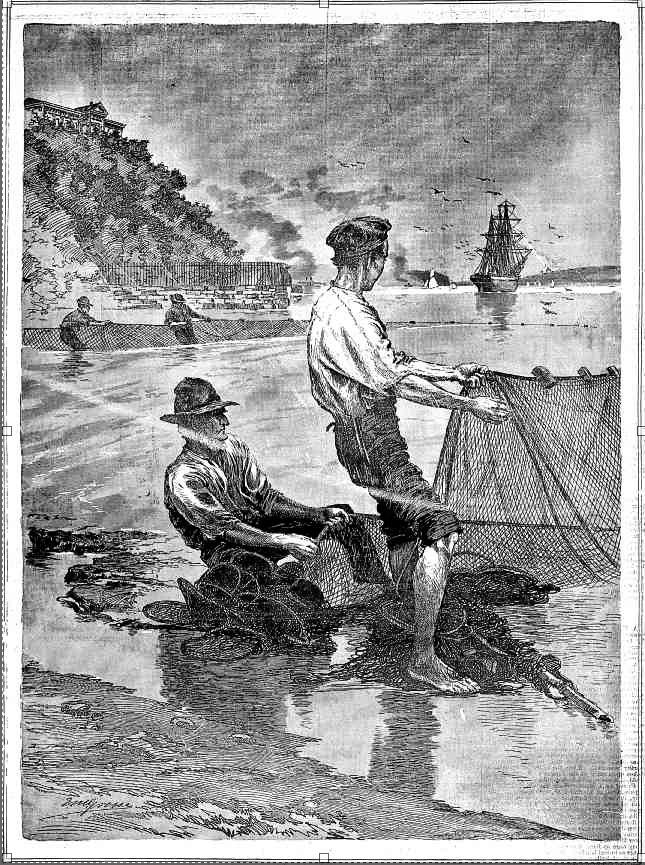
OUR FISHERMEN-HAULING THE NET IN PORT JACKSON, SYDNEY.
Our Fishermen. (1889, June 22).Australian Town and Country Journal (Sydney, NSW : 1870 - 1907), p. 28. Retrieved from http://nla.gov.au/nla.news-article71120232
FISHING IN NEW SOUTH WALES.
No- III.— THE SCHNAPPER (Pagrosomus Auratus).
BY CHARLES THACKERAY.
(PUBLICATION RIGHTS RESERVED.)
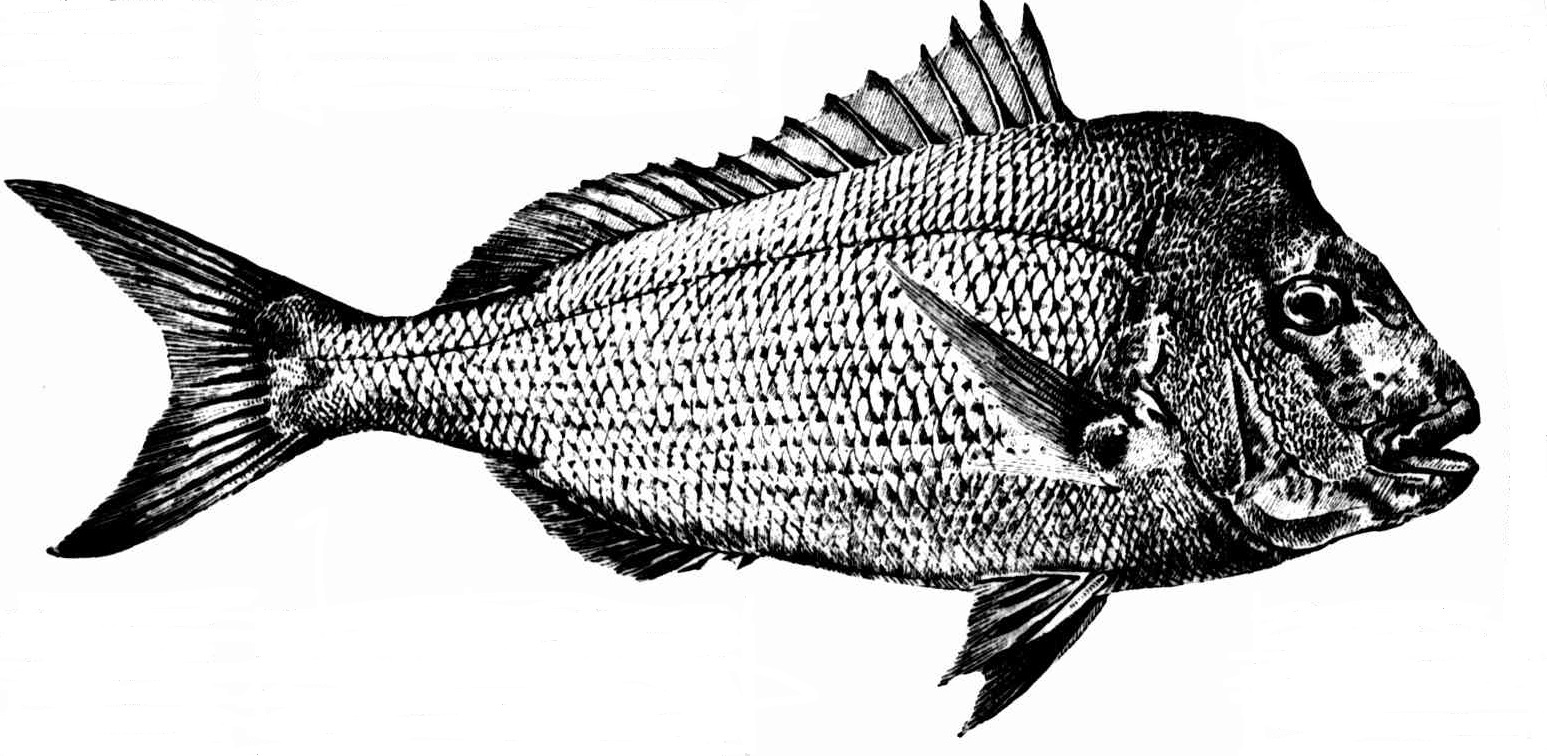
SCHNAPPER (Pagrosonus Auratus).
THE stranger bringing his rods and tackle to Australia for sport would be apt to conclude from the talk of fishermen that there are only two fish in the whole of the water— namely, the black bream and the schnapper. Each fish certainly deserves most of the laudatory adjectives bestowed upon it, but the schnapper is not an angler's fish in the same degree as the black bream, the king fish, and salmon, or the jewfish. Nevertheless, it is a glorious fish to catch, and it is more talked about on the seaboard of New South Wales than ' any other fish that swims. Schnapper fishing is principally an ocean-goer's sport in this country, as most of the schnapper with the least grain of sense have been driven out of the harbours to the open sea. To explain why the fish have largely gone from such almost land-locked places as Sydney Harbour would be to C enter upon a wide field for discussion, and that is not the purpose of this article. Suffice it to say that the fish is now regarded as an ocean fish, and it is to the ocean one must go to catch them in quantity. Those who have not found their sea legs or learned all the intricacies C of this seductive branch of hand-line fishing naturally cannot enthuse over the rough sport which will be fully described later on.
The Schnapper, or Wollomai, of the aboriginals, is a marine carnivorous fish inhabiting tropical and sub-tropical waters, and is familiar to the fishermen of the Californian coast, the Caribbean Sea, the eastern and western coasts of Africa, the islands north of Australia, the Mediterranean Sea, the China Sea, and all round Australia and New Zealand. It is exceedingly plentiful in quite shallow water in New Zealand, where it is not so highly esteemed, and it seems to reach its greatest size off King George's Sound, the Leeuwin, and the Abroihos, near the Western Australian coast. It is usually found over reefy bottoms here, and close to the shore, in water not less than twenty or thirty feet deep.
A few fish live in the deep, nearly land-blocked stretch of Cowan Creek, in Broken Bay, and in Port Hacking. At certain times of the year immense shoals are encountered over gravelly and shelly patches of ocean floor, when these parts are peopled with crustaceans. Young schnapper are familiar to our fishermen as red bream, or cockneys, which is the name given to the fish up to nine inches long.
From a half-pound to two pounds weights they are called bull bream, and from two to four or five pounds in this haphazard classification— there can be no exactitude— they are called squire. It is when over the last weight that the fish are dignified by the name of schnapper, but, as a matter of fact, they are schnapper from the fry stage, and should really not be burdened with so many different names. When young, the little red schnapper are covered with many opal-tinted spots, which give them a very beautiful appearance. Some of the older fish retain these spots, but in many adult specimens the ornamentation has disappeared. The most noticeable feature in all the family is the heavy, bony, rounded, frontal development of the head, which, in an old male or female fish, is a distinct knob, often misshapen, as if through encounters. The possession of the bump of benevolence of a schnapper of 25 pounds weight or more is something that many anglers glory in.
Mr. J. D. Ogilby, in his 'Edible Fishes of New South Wales,' questions Castlenau's statement that schnapper weighing fifty pounds have been caught, but there is j constant verbal evidence that Castlenau ' was right as regards the Western AusC tralian forms. Specimens of schnapper over thirty pounds are quite common on this coast and one weighing 42 lb was once caught in Middle Harbour, in Port Jackson. The shapes that some of the heads of these large ones take are very curious, some being grotesquely human. One as ugly as Ally Sloper after a night out, and with an inflamed bottle nose, is possessed by the Fisheries Department of New South Wales, and has been exhibited in many places, with a hat on its head and a pipe in its mouth. The body of the schnapper tapers away from the bulky head and shoulders to a slender tail-piece, so that the general shape of the fish has been described as an obtuse angled triangle. The upper jaw is slightly longer than the lower. Both jaws have four canine teeth in front, and behind these is a mixed assortment of teeth, which serve the owner's purpose in chewing up various foods.
The schnapper likes a fat crab as well as anything that crawls or swims in the ocean, so it has to have teeth able to crush up the carapace in order to enjoy the kernel of meat inside. The dorsal spines are not so strong or sharp as those of the black bream, nor are the gill-covers as sharp, but the fins generally are well set up. The gillcovers have sharp points. The tail is well-forked, and the pectoral fins are long and soft. The lateral line has a slight curve from the gill for about half the length of the body, and then lies parallel to the dorsal line a little above the centre. The fish ranks very near the top in public estimation of what constitutes a first-class edible fish, but, unfortunately, the market supplies are not always maintained on account of the depletion of the nurseries, and for other reasons.
Professionals with long lines and safe sea boats keep the metropolis scantily supplied with fish, and large quantities come from New Zealand. The greatest schnapper grounds are about Cape Hawke and the Clarence Heads, but others not nearly enough fished are to be found south of Kiama, especially near Uatoinan's Bay, the Sir John Young Banks, Abraham's Bosom, not far from Crookhaven, Montagu Island, and Twofold Bay. Sportsmen catch their own supplies during the winter, when the westerly winds blow and the fish are in excellent condition. Parties often'*shake off the dust of the city, and journey in more or less comfortable tug-boats (mostly lessj in search of health and pleasure on schnapper fishing excursions along the coast of New South Wales, carrying all the appurtenances needed. These include hemp or thread schnapper lines 200 to 300 yards long, several stiff snooded hooks, deep-sea sinkers, a strong knife, finger-stalls, overalls to wear, and sand-shoes for the feet, the last-named being required for walking about the deck amongst the coiled lines. Most ocean fishermen are well equipped with all the paraphernalia incidental to the sport, and the borrower on a decent trip is a rarity. When the strong, cold winter westerlies blow across the Dividing Range from the bleak western plains the sea close inshore is calm, and, as the chances of a slow drift are enhanced, those of making a good haul of fish are increased.
Schnapper fishing is hardly adapted for weaklings or those who suffer severely from mal-de-mer. It is a man's work, and a long day of it proves tiring to the strongest, for the whole time the fishing is going on a man must stand and balance himself at the side, while the hands manipulate the strong lines and heavy leads. When, as frequently happens, two large fish are struck at once, the weight of the tugging schnapper and the drift of the boat make the job of hauling up an arduous one. It is a common occurrence to see men lean back quite blown and tired after hauling in a dozen large fish from the great depths. British sea anglers have come here believing they can fish for schnappor with their stout sea rods from the tugs, but one experience soon convinces them that it is better to revert to the primitive game. For one thing, the vessel is drifting continually, and as the lead and hooks must drag along the bottom the sinker is often caught on something below, and there is a smash.
Furthermore, a schnapper cannot be played on a drifting steamer when there are 20 men alongside with their lines out yelling to a man to get his fish in and not let it stray in search of a shark. The fish does not come in like a log, but thumps and fights till it is out of the water. A favourite destination for the tugboats is Bird Island, about 40 miles north of Sydney. The boats start for a place so far away as Bird Island or Coalcliff shortly after midnight, and as the accommodation for sleeping on the craft is of the scantiest, men are fortunate who manage to get an hour or two of sleep before dawn. As dawn approaches men gather round the swinging lamp and ballot for positions on the boat. This proceeding is necessary, and is pretty well adopted on all the best trips organised in Sydney. It makes for discipline and comfort, and there is no need to bicker about anyone securing the best place. The fishing is only carried on from one side of the vessel as she drifts broadside to the wind or with the current. Sometimes, through, an. awkward arrangement of the coal or water ballast, a vessel will pay away faster forward than aft, and unless the engines are used to give her a kick occasionally the lines may all run the one way, instead of straight out from the side, and very soon there is a chance of their being twisted into one strong rope. Good skippers who know the drifting capacities of their boats have no difficulty with an uneven distribution of the weight within the vessel.
Dawn comes softly across the Pacific, while the sportsmen shivering in the icy breeze are getting their lines into the water. Often the bait is frozen during the night, but when the mellowing rays of the sun spread across the water everything looks rosier, and before his yellow disc has cleared the water the sport is in full swing. If on the feed the fish seize the baits with avidity, the sport often continuing good till 10 a.m., and sometimes all day. The beautiful long lines rolled into balls, or wound on large corks that will permit an easy run, are fitted with whale-boat pattern leads in some cases, and with various kinds of plummets in others. Most men fish with three hooks on. At the Clarence and Tweed Heads men fish with six hooks often, but there is nothing in this, except a desire to grab a lot. Three hooks are quite enough for most sports-men. The sizes of the hooks vary from bream to schnapper hooks, 3-0 to 8-0. . Lumps of squid, mullet, yellow-tail, mackerel, cungevoi, and other baits are used. A successful dodge with squid is to cut the white flesh into small squares, and place a number of these on the hook. A fish may tear one piece off, and still find more looking at him. If one large piece is used, one tearing bite may finish it, although the fish may have only got hold of a scrap of it.
Schnapper men find the best bottoms very uneven, and those who engage frequently in the sport can tell almost exactly what kind of bottom they are over by the feel of the lead dragging the bottom. The first man to strike a schnapper sends forth a long-drawn cry of 'Snappe-e-e-r,' and everyone is soon on the quiver, for the fish waste no time, and rarely need to bite twice at the one bait. Everybody must fish hard while the shoal is about, for the tug soon drifts off the fish, or the party may be driven away by sharks. Some skippers pick up a drift two or three times by means of the cross bearings. Indeed, all the best grounds are well known to many men who make a living during the winter by acting as pilots to schnapper-fishing parties. These men carry in their heads a splendid series of maps with cross-bearings, and are able without compass or chart to pick up a particular spot with unfailing accuracy. Of course, this only applies to grounds within ten miles of the coast.
Sharks are a frequent nuisance, and as they cause endless tangles men are usually content to relinquish fishing when they come about, and wait until the vessel is taken to some other place. There they may strike leather-jackets or barracouta, and find they have fled from Scylla . to Charybdis. When the bottom is extremely rough the majority of the men may be seen hanging on to their lines, J whipping them round their waists as the leads hold and the tug drifts on relentlessly. One cannot hold the boat with a schnapper line. There are several rich deposits of lead along or coast as a result of schnapper fishing. Favourite grounds for Sydney fishermen are Bird Island, Bungaree, Norah Head, off Tuggerah, Terrigal, Cape Three Points, Barranjoey wide, Hole-in-the-Wall. Narrabeen wide, and Long Reef. This subject will be further dealt with on another page.
FISHING IN NEW SOUTH WALES. (1907, July 3). The Sydney Mail and New South Wales Advertiser (NSW : 1871 - 1912), p. 37. Retrieved from http://nla.gov.au/nla.news-article163661896
In 1895 Charles Thackery, a journalist for the Evening News and avid fisherman, known as 'Wobbygong' to acquaintances and friends alike, was instrumental in forming what is regarded as the oldest Fishing Club in Australia who became strong advocates for reforms in regards to protecting our fisheries:
Amateur Anglers. AST ASSOCIATION FORMED.
A meeting of gentlemen interested in the formation of an Amateur Fishing Association was held last evening at Punch's Albion Hotel, Elizabeth-street. The chair was occupied by Mr. W. C. Shipway, M.L.A., and there were about thirty present, all of whom were enthusiastic disciples of the late Isaak Walton. The chairman explained the objects of the meeting, which he said was not only to provide sport for the members of the proposed society, but to protect and develop the fisheries in Port Jackson and its environments, and more especially to prevent the wanton destruction of small fish. Mr. C. Thackeray moved —'That an association, to be called the Amateur Fishing Association of New South 'Wales, be formed, having for its objects the protection of fish, the promotion of good fellowship amongst fishermen, the advancement of the sport of fishing by prize contests, reliable information, and the reduction of expenses in travelling, boat hire &c, and sundries.' The motion was seconded by Dr. Graham and carried. The following gentlemen were appointed office bearers: Patrons, Messrs. J. H. Carruthers, M.L.A., E. H. D. White, M.L.C., F. Farnell, M.L.A. Dr. Cox, James Marks, and Critchett Walker; president, Mr. W. E. Shipway, M.L.A.; vice presidents, Dr. Graham, M.L.A., Messrs. H.M'Lachlan, and A. Spain; hon secretary, Mr. C. Thackeray; treasurer, Mr. E. L. Maxwell; committee, Messrs. G. L. Goodman, C. B. Jackson, A. Light, Wiseheart, Despointes, Gruning, Thynne,' Torr, and C. B. Rodin. It was decided that the subscription should be 5s per annum, and that another meeting should be held on Friday next, when the committee would bring up rules and regulations. Trophies were promised by Mr. Shipway, Messrs. Mason and Company, and Mr. Despointes. Amateur Anglers. (1895, January 26). Evening News (Sydney, NSW : 1869 - 1931), p. 3. Retrieved from http://nla.gov.au/nla.news-article108071172
MR. CHARLES THACKERAY.
Mr. Charles Thackeray, a well-known Sydney journalist and an authority on fishing, died suddenly yesterday aged 71 years. He had been editor of the "Police News," the official publication of the N.S.W Police Association, for the past 18 years.
Mr. Thackeray was born at Bellambi, South Coast, and was educated at St. John's School, Darlinghurst. He became a school teacher at the early age of 14 years, and entered journal-ism 11 years later. He served on the literary staffs of the "Sydney Morning Herald," "Syd-ney Mail," and the "Evening News" before lie became editor of the "Police News."
Fishing was his hobby from childhood. He wrote extensively on amateur fishing, and was the founder of the Amateur Fishermen's As-sociation. He also took a leading part in the Rod Fishers' Association.
He is survived by Mrs. Thackeray, two sons, Messrs. Norman and Harold Thackeray, and two daughters, the Misses Heather and Joan Thackeray.
MR. CHARLES THACKERAY. (1938, June 6). The Sydney Morning Herald (NSW : 1842 - 1954), p. 7. Retrieved from http://nla.gov.au/nla.news-article17496810
